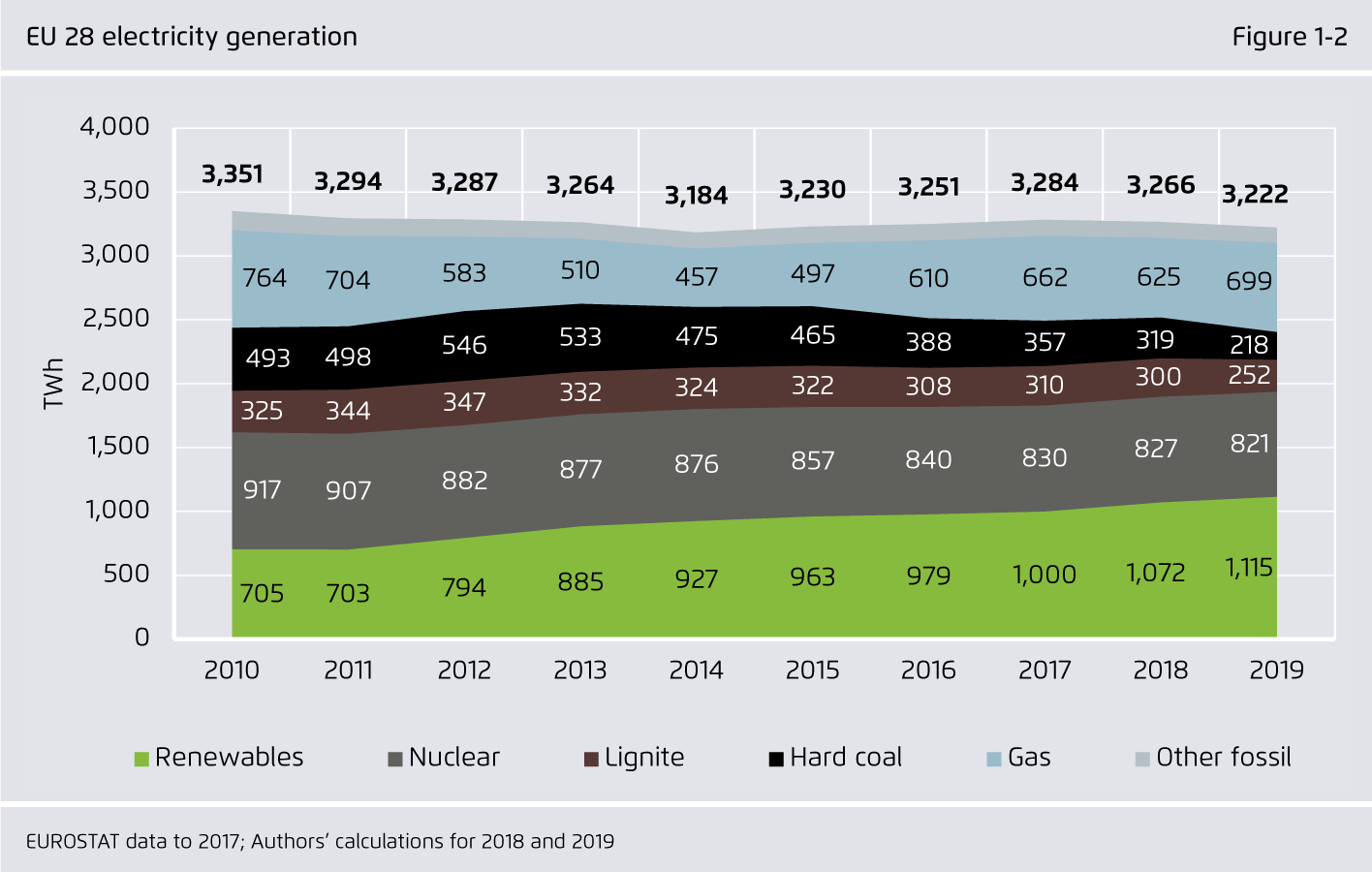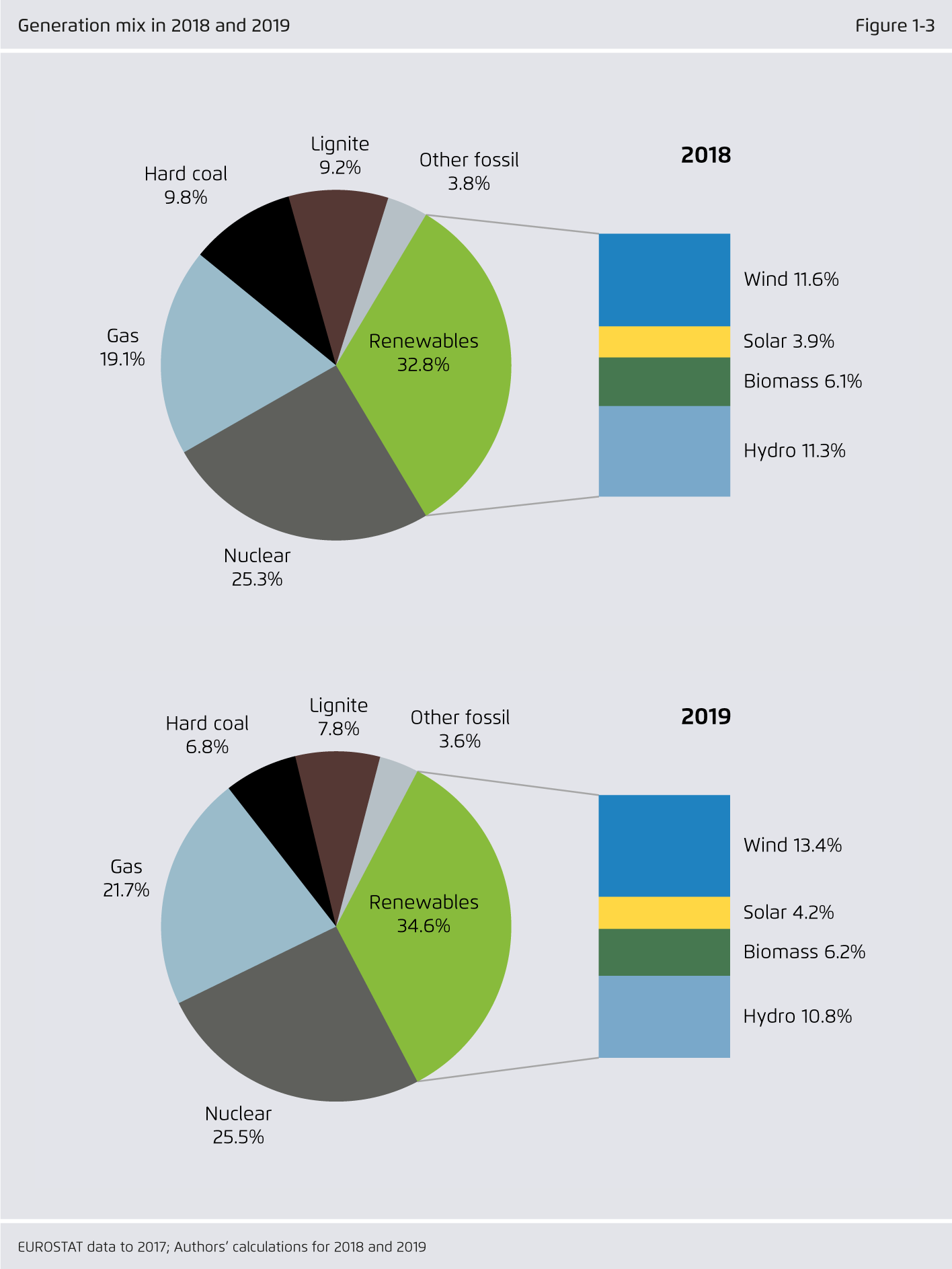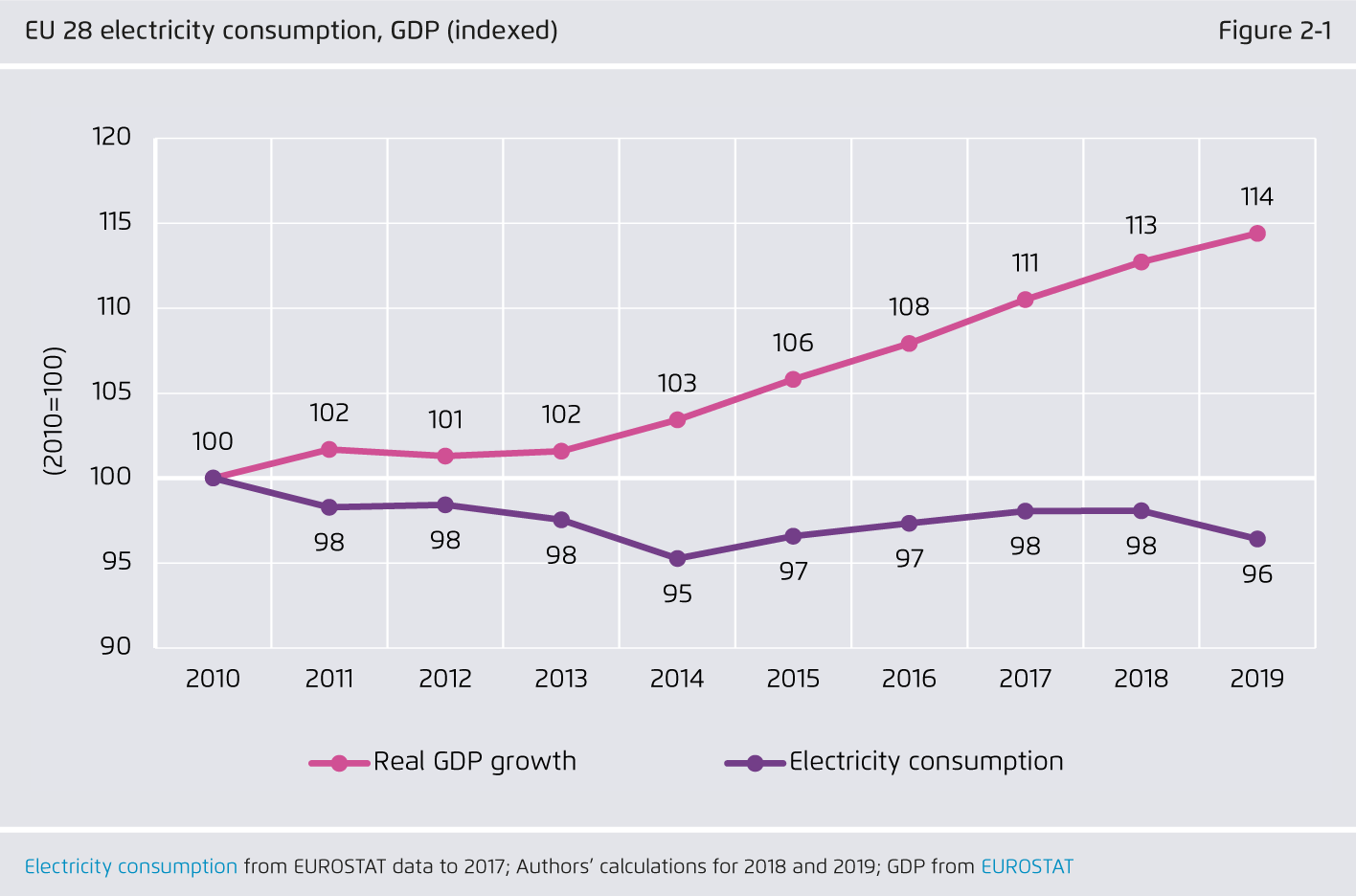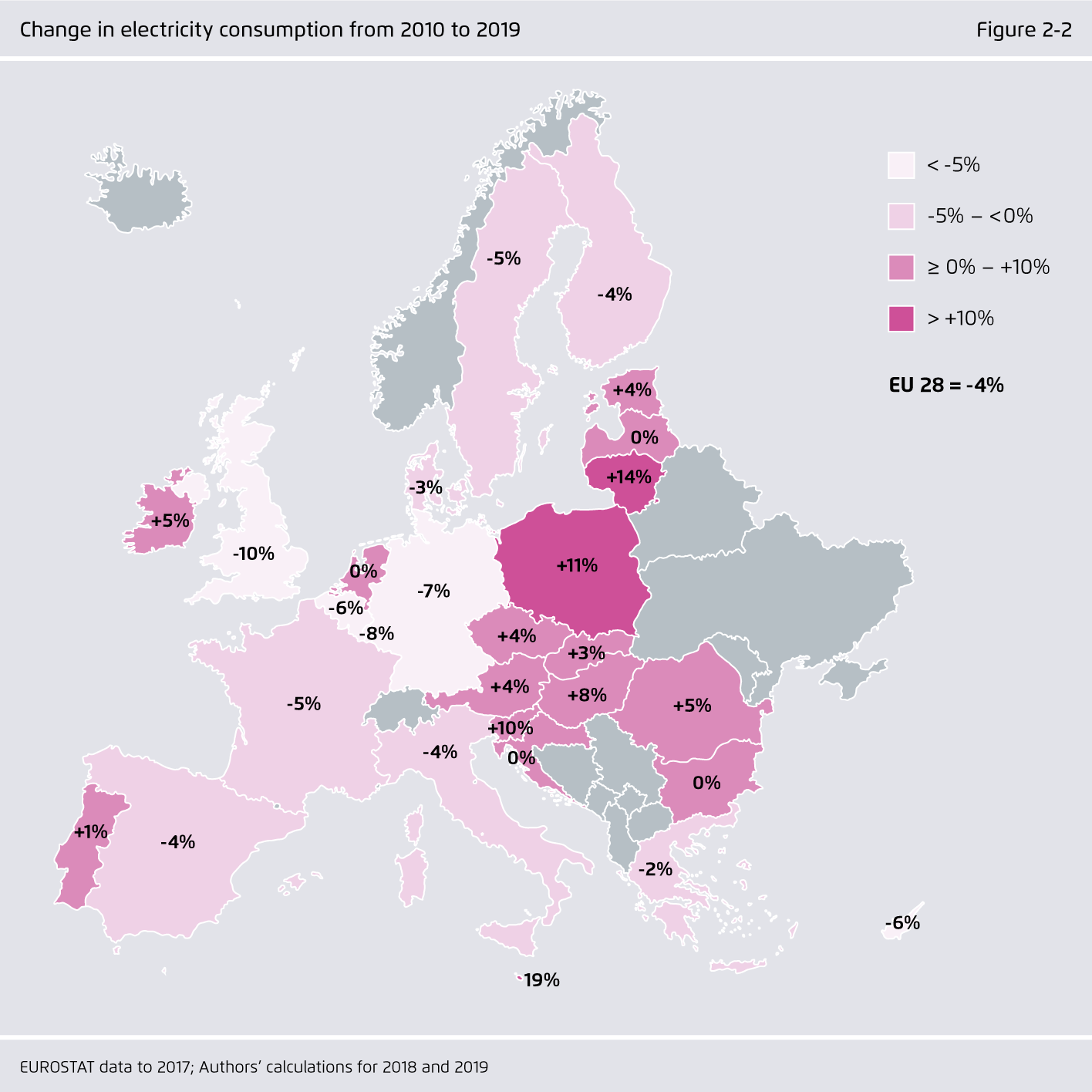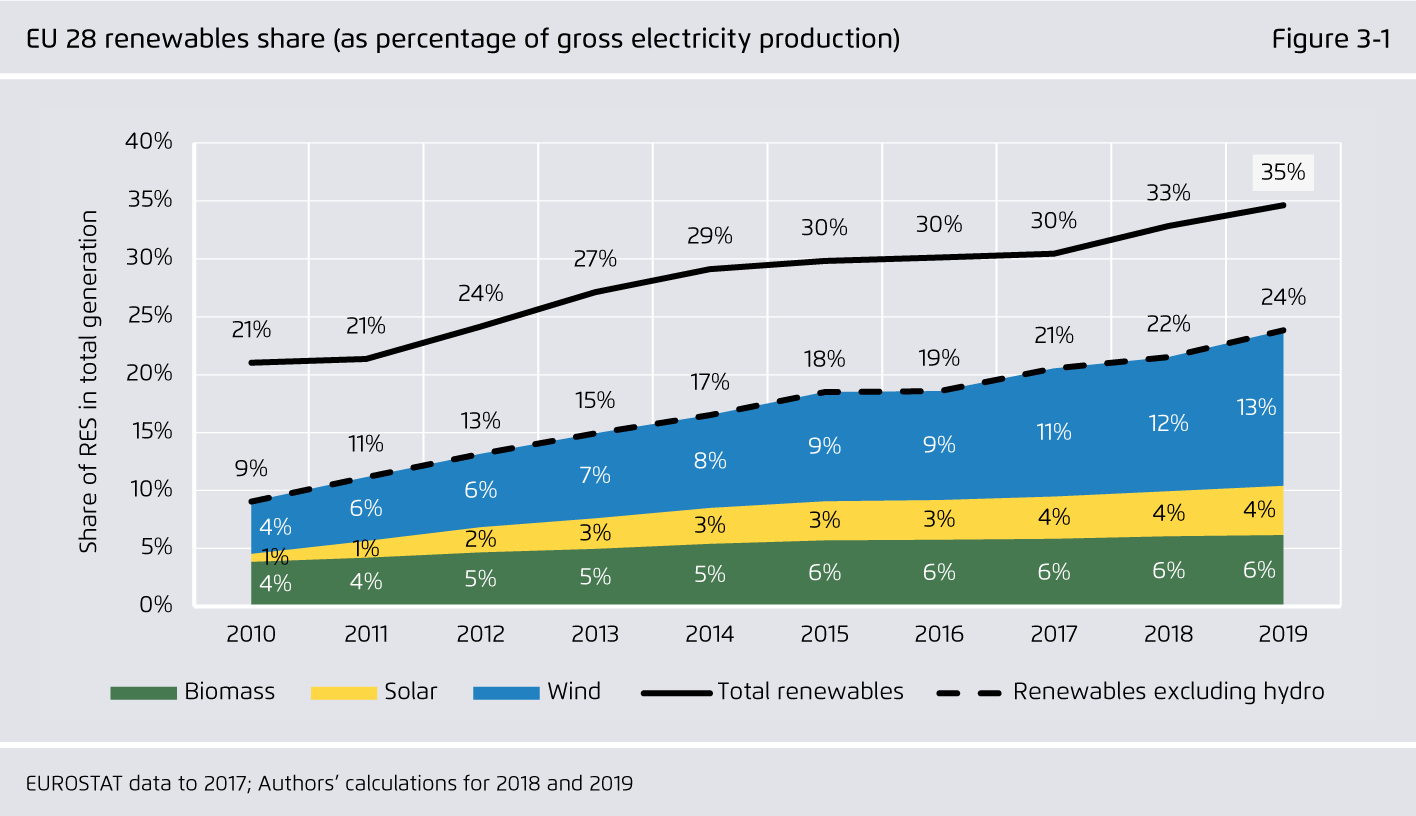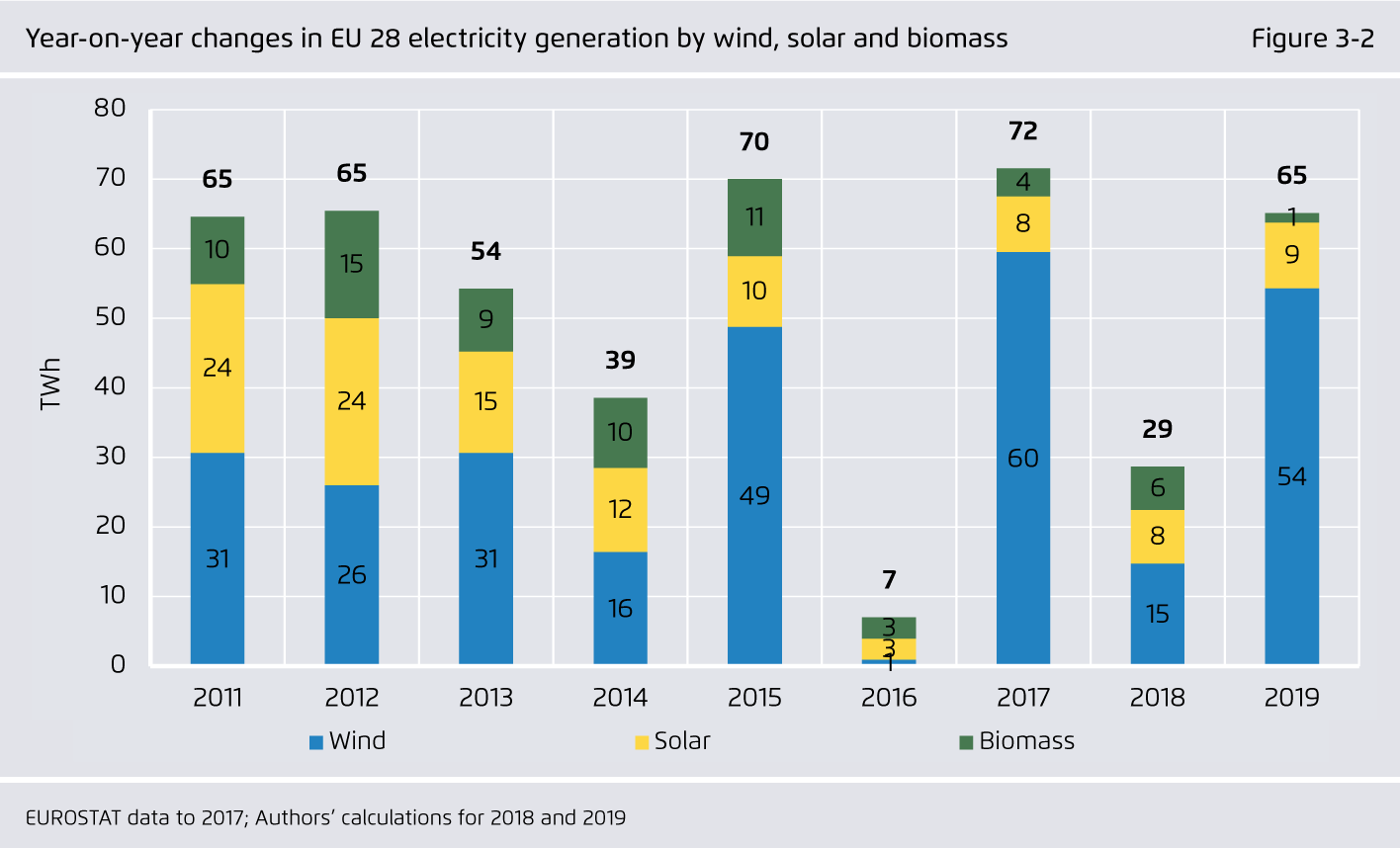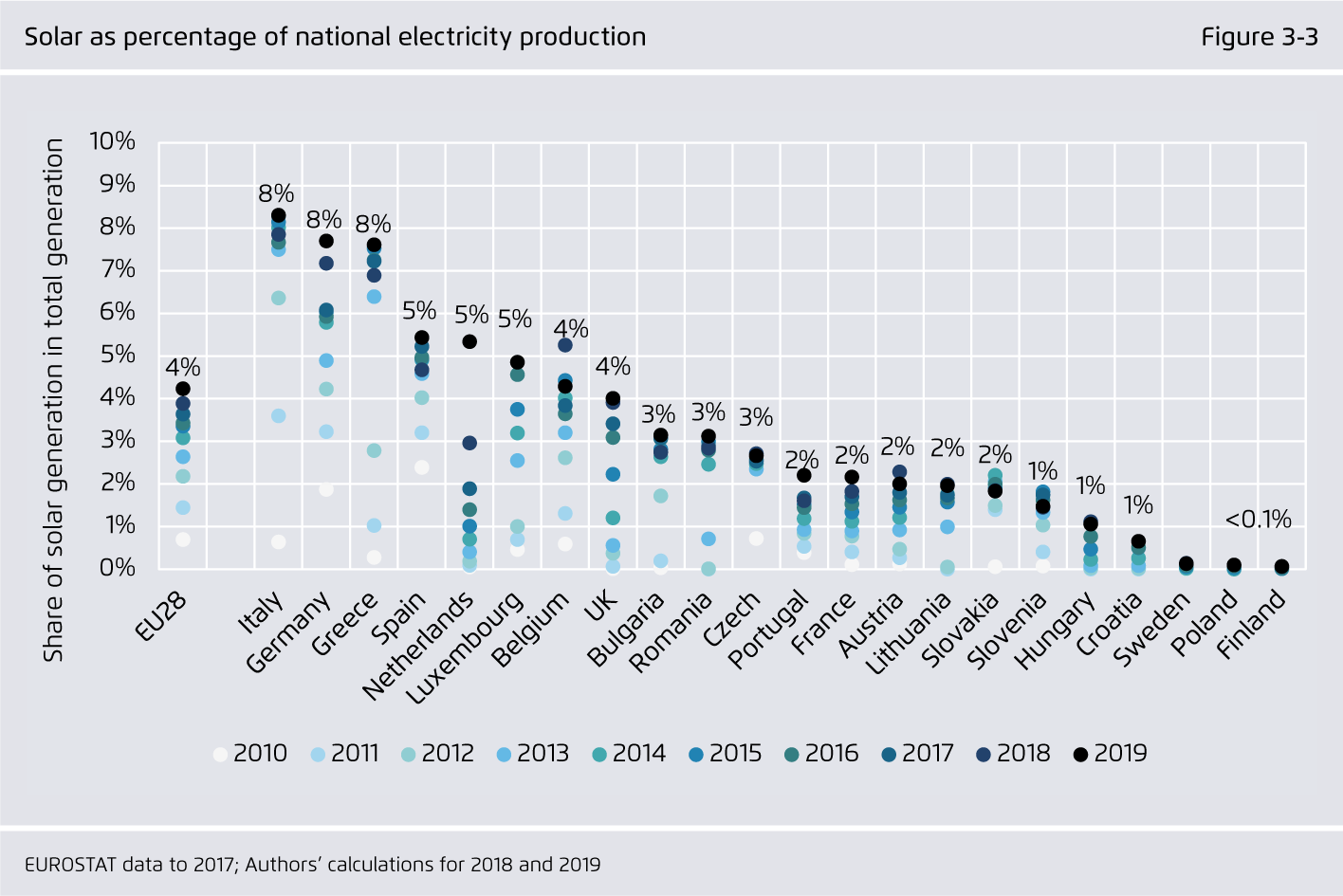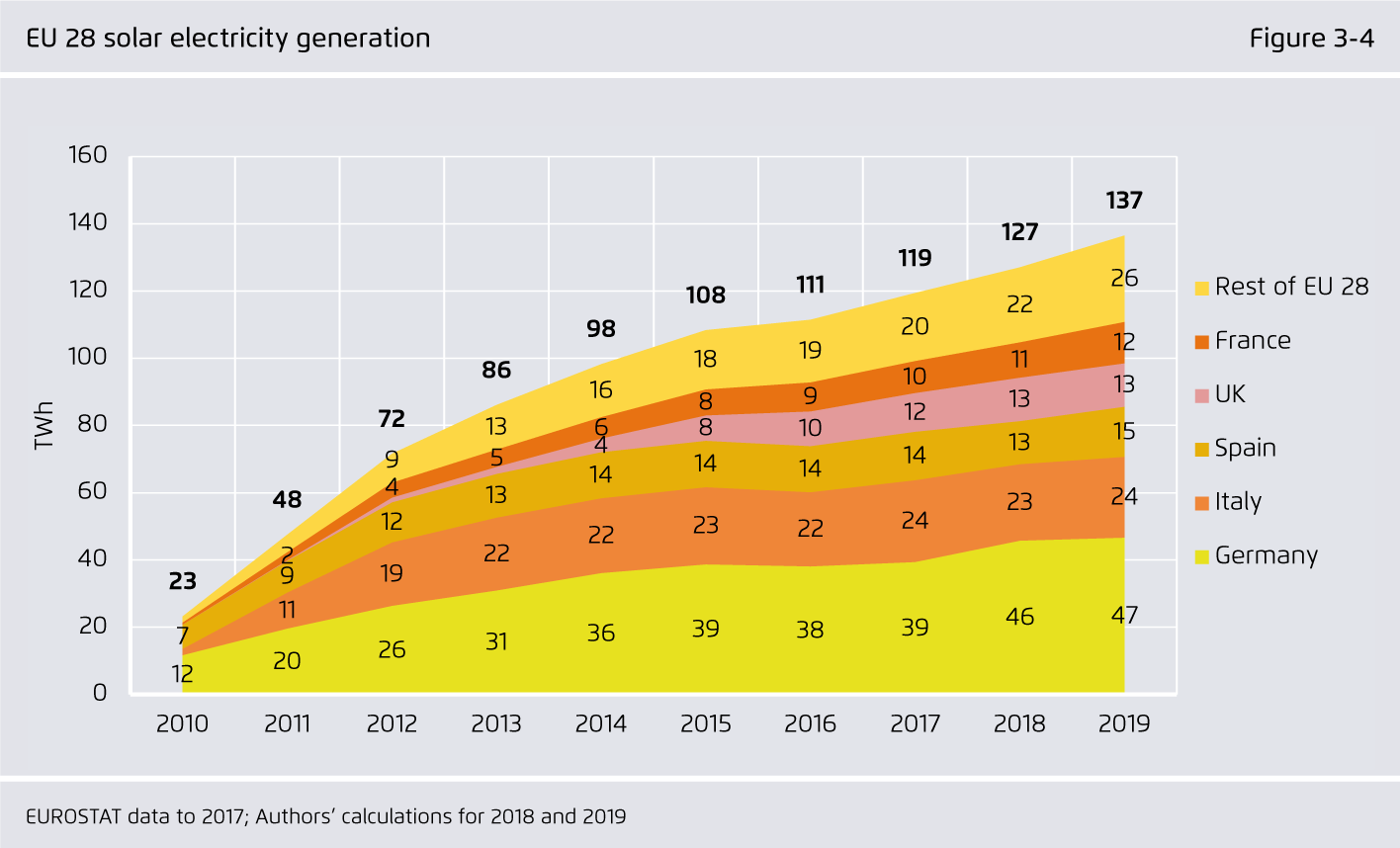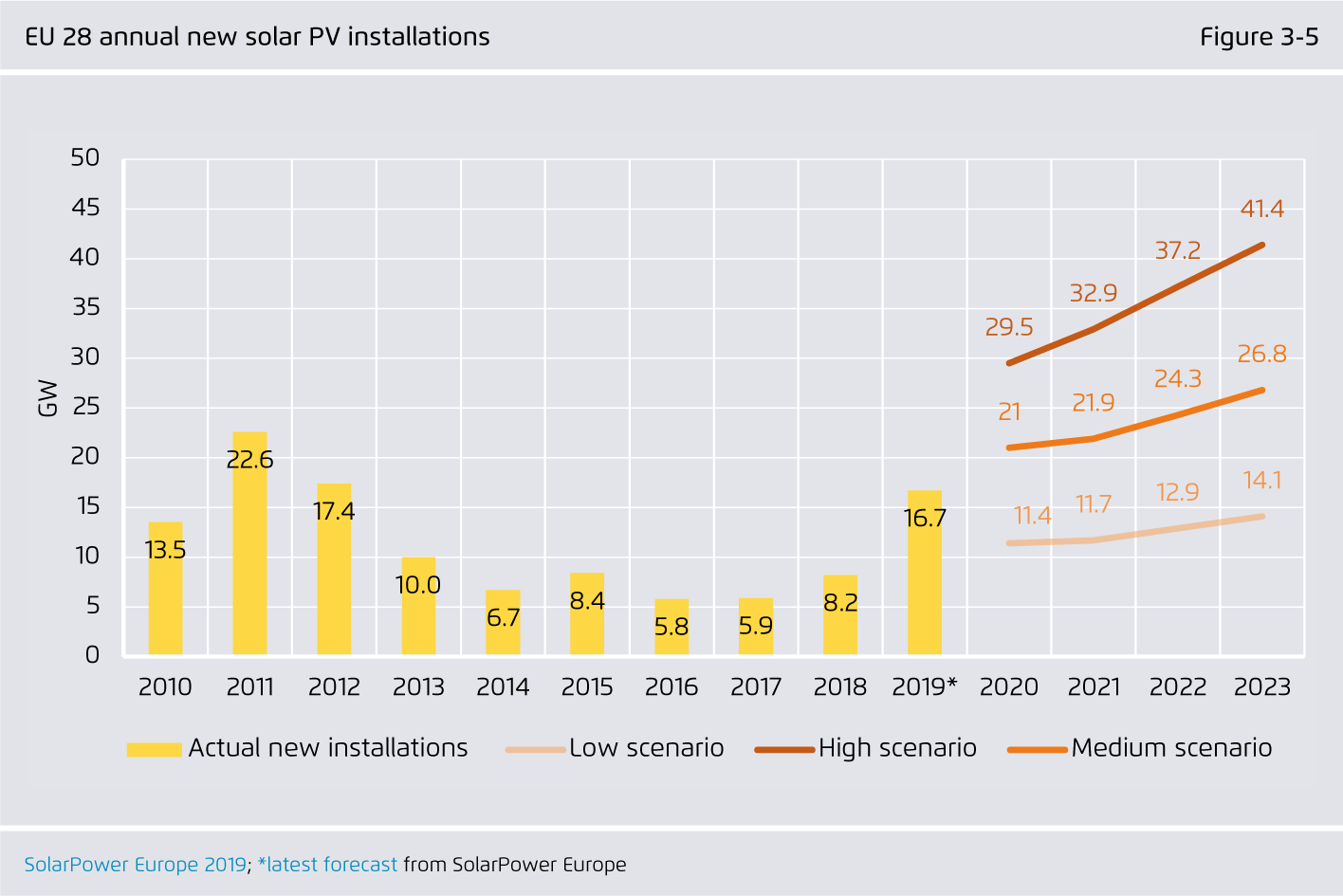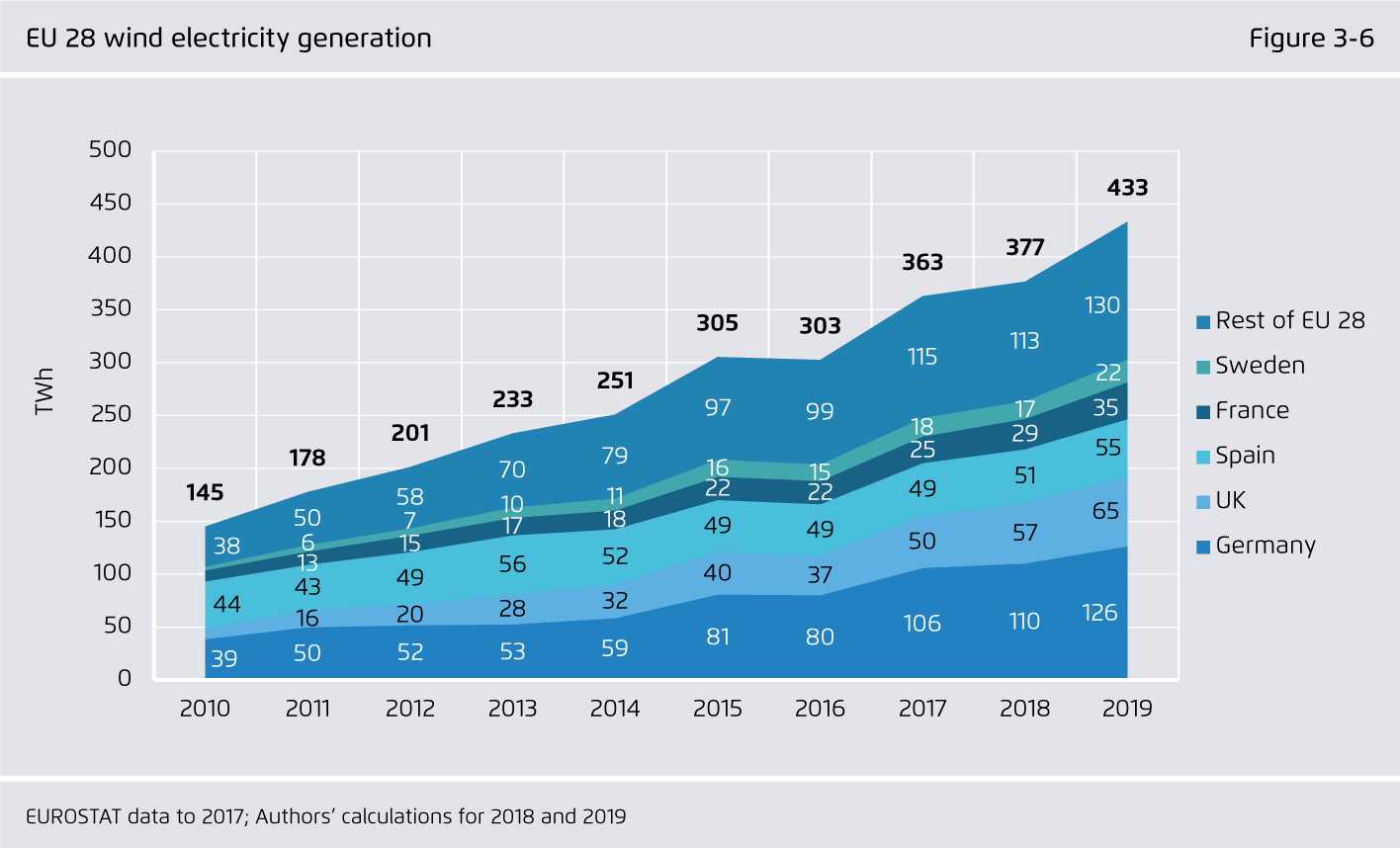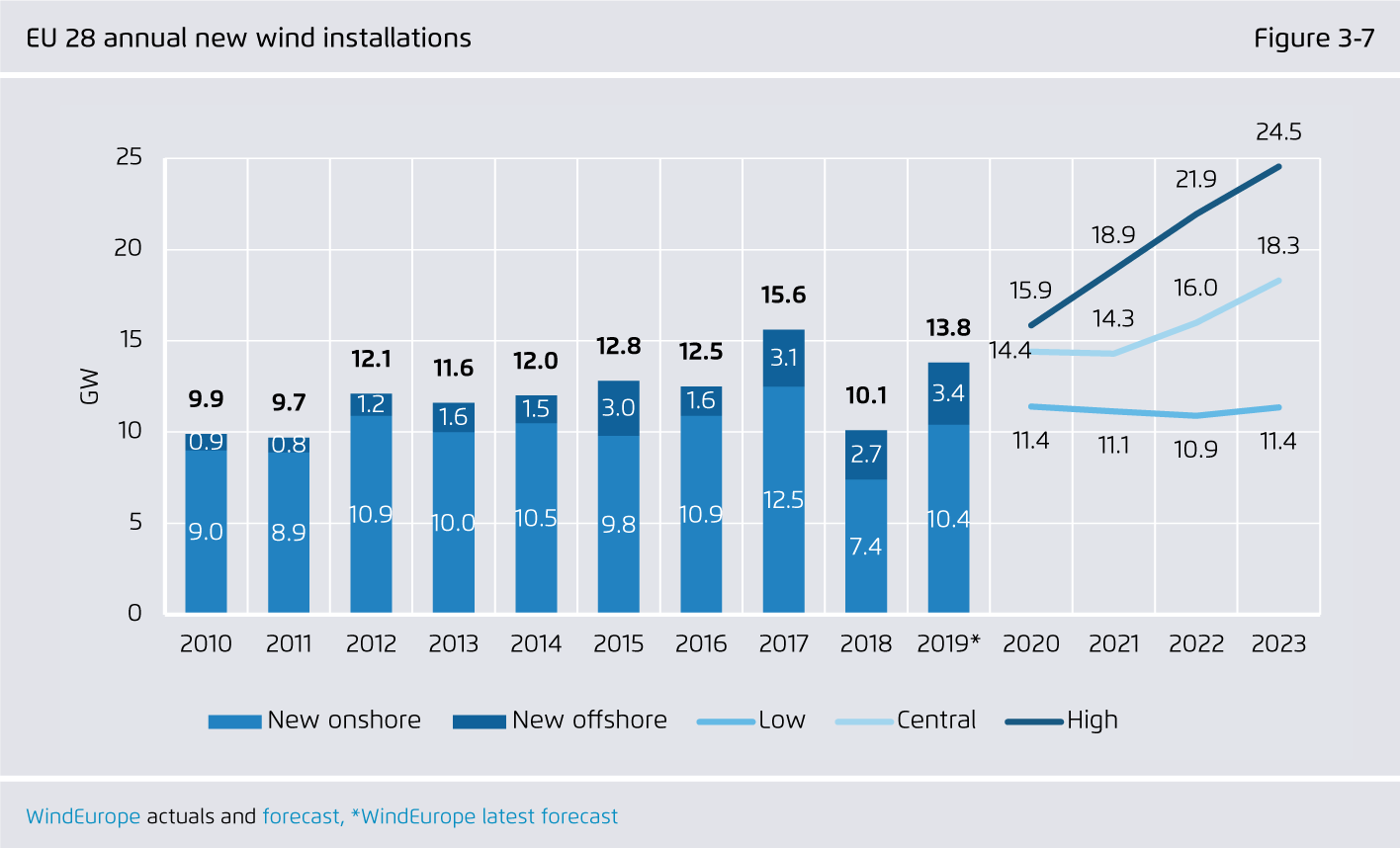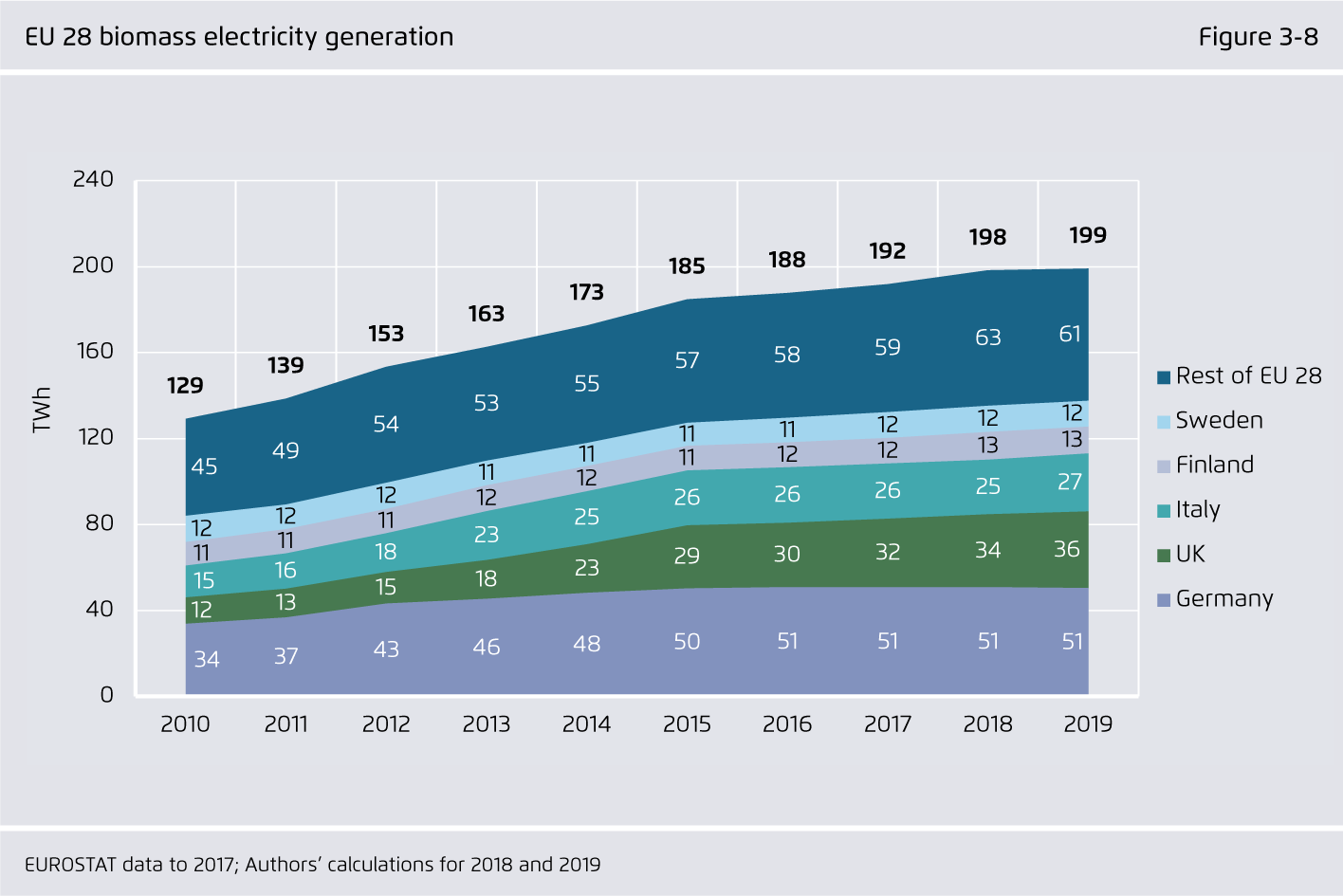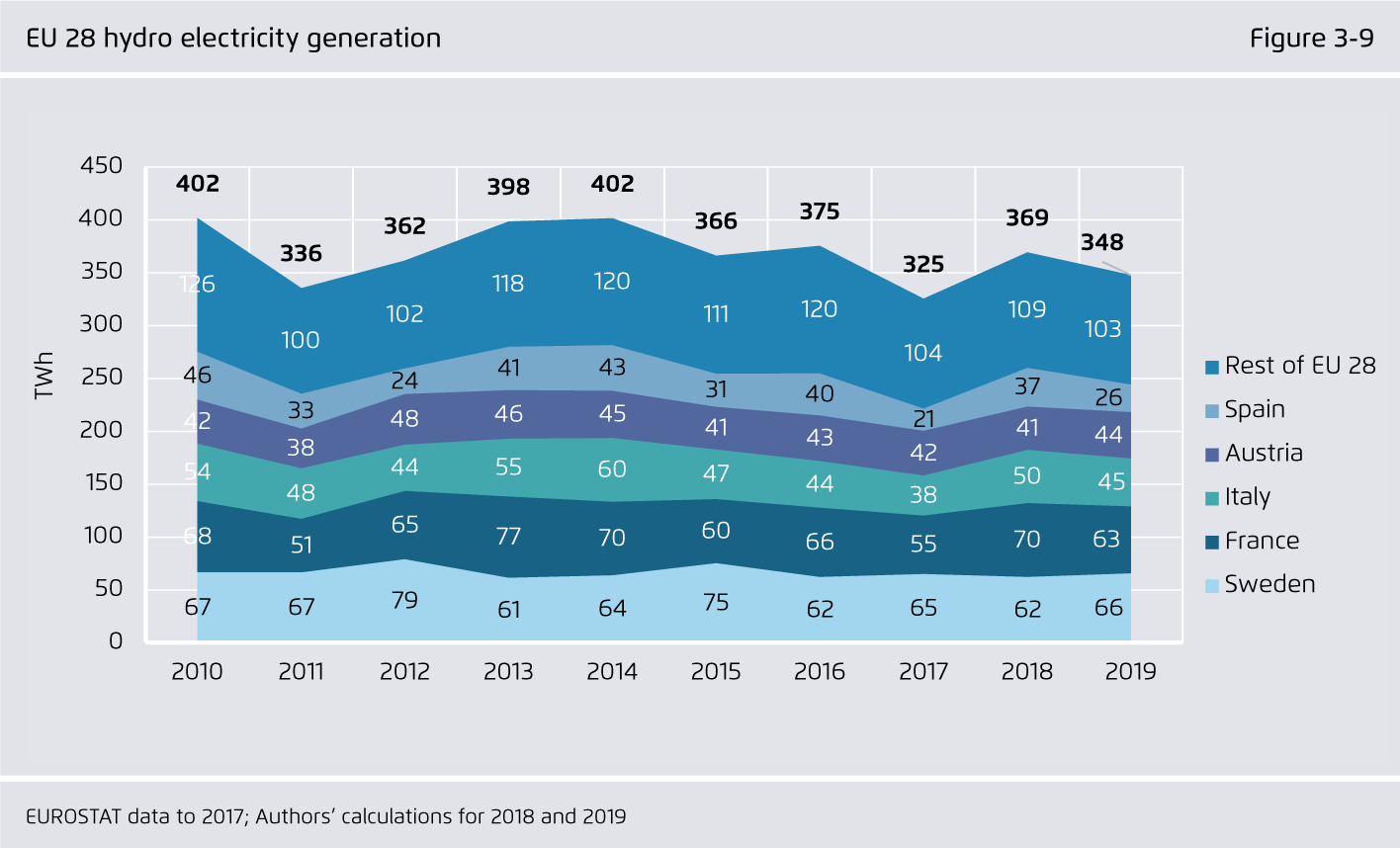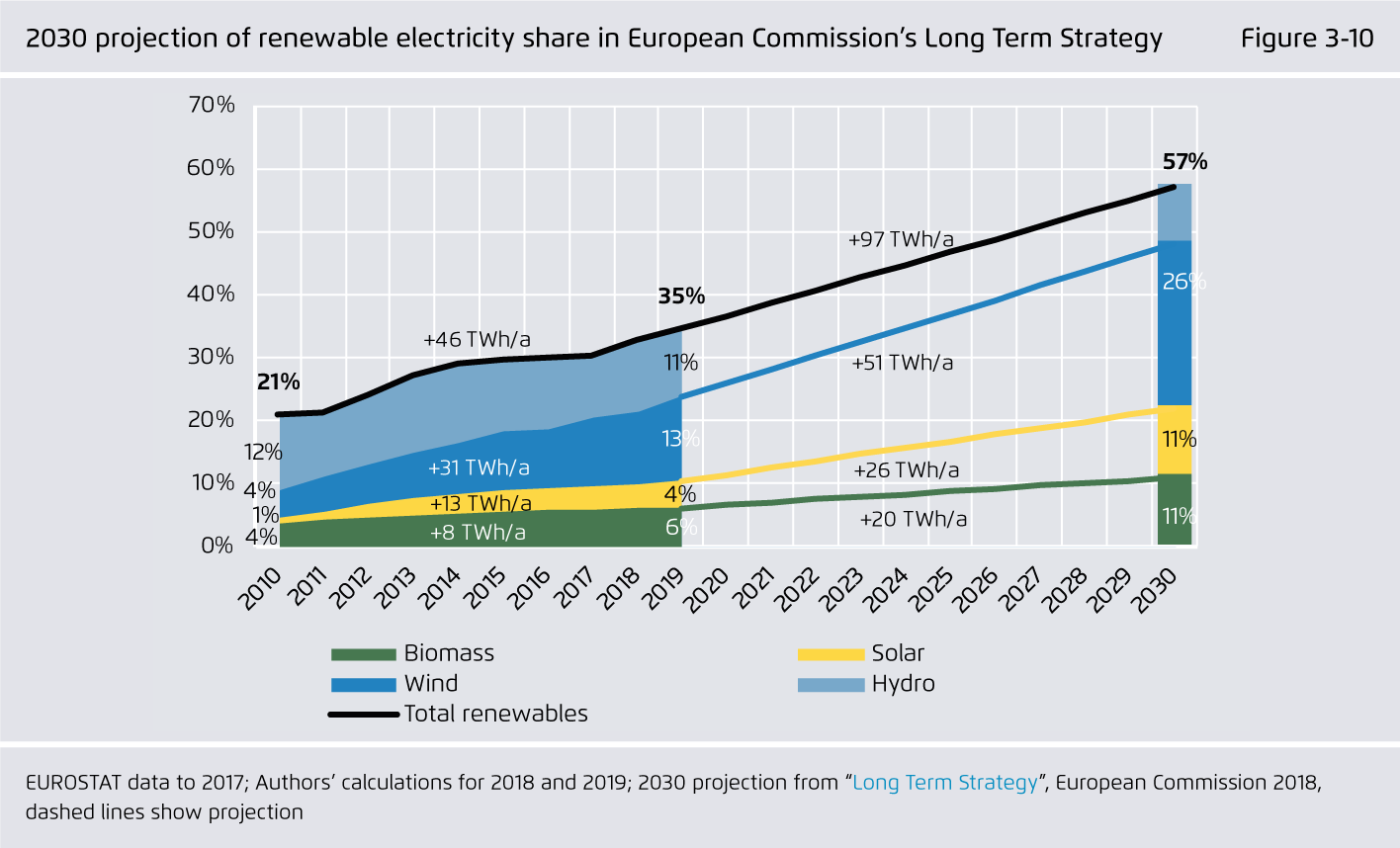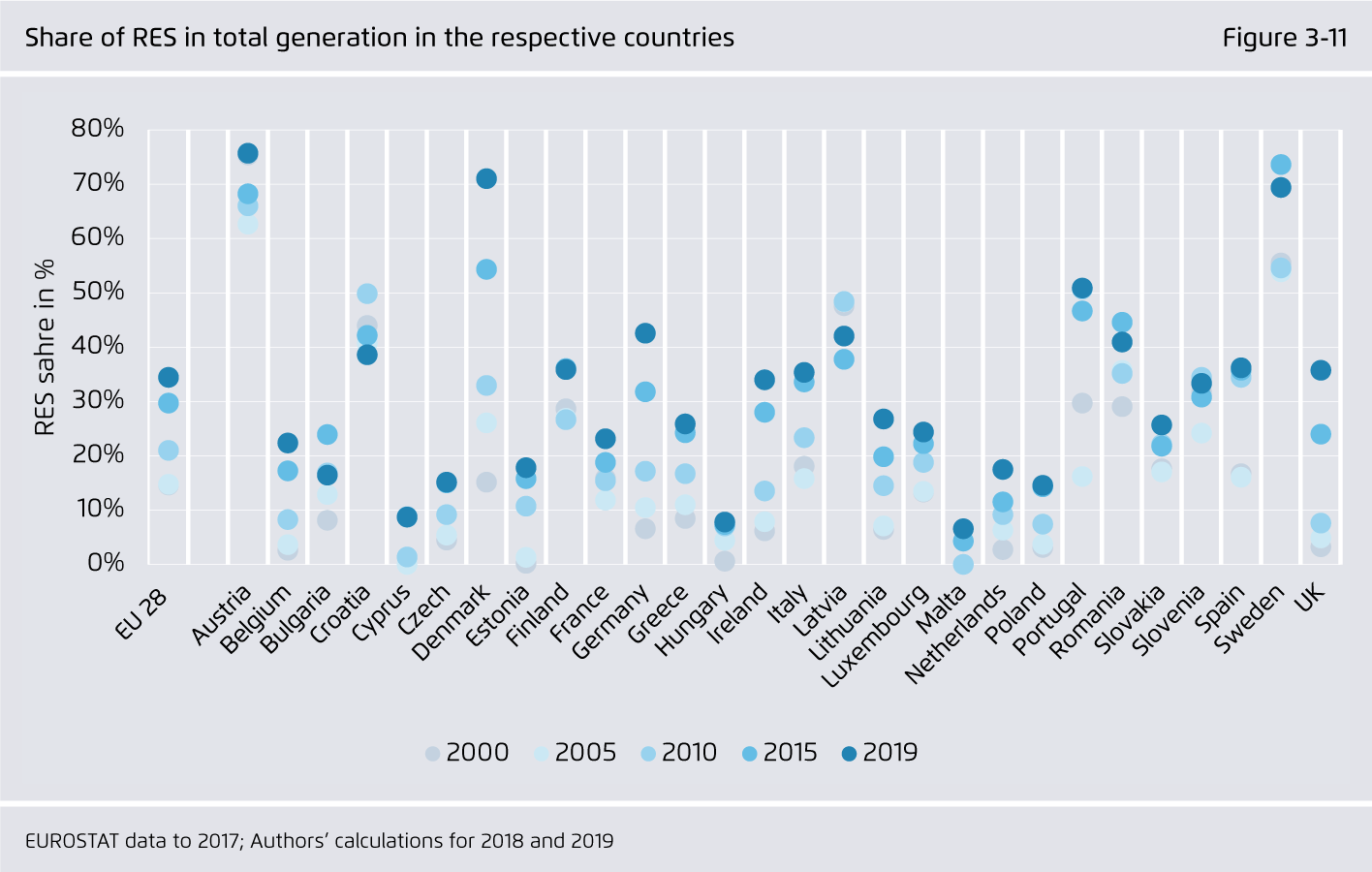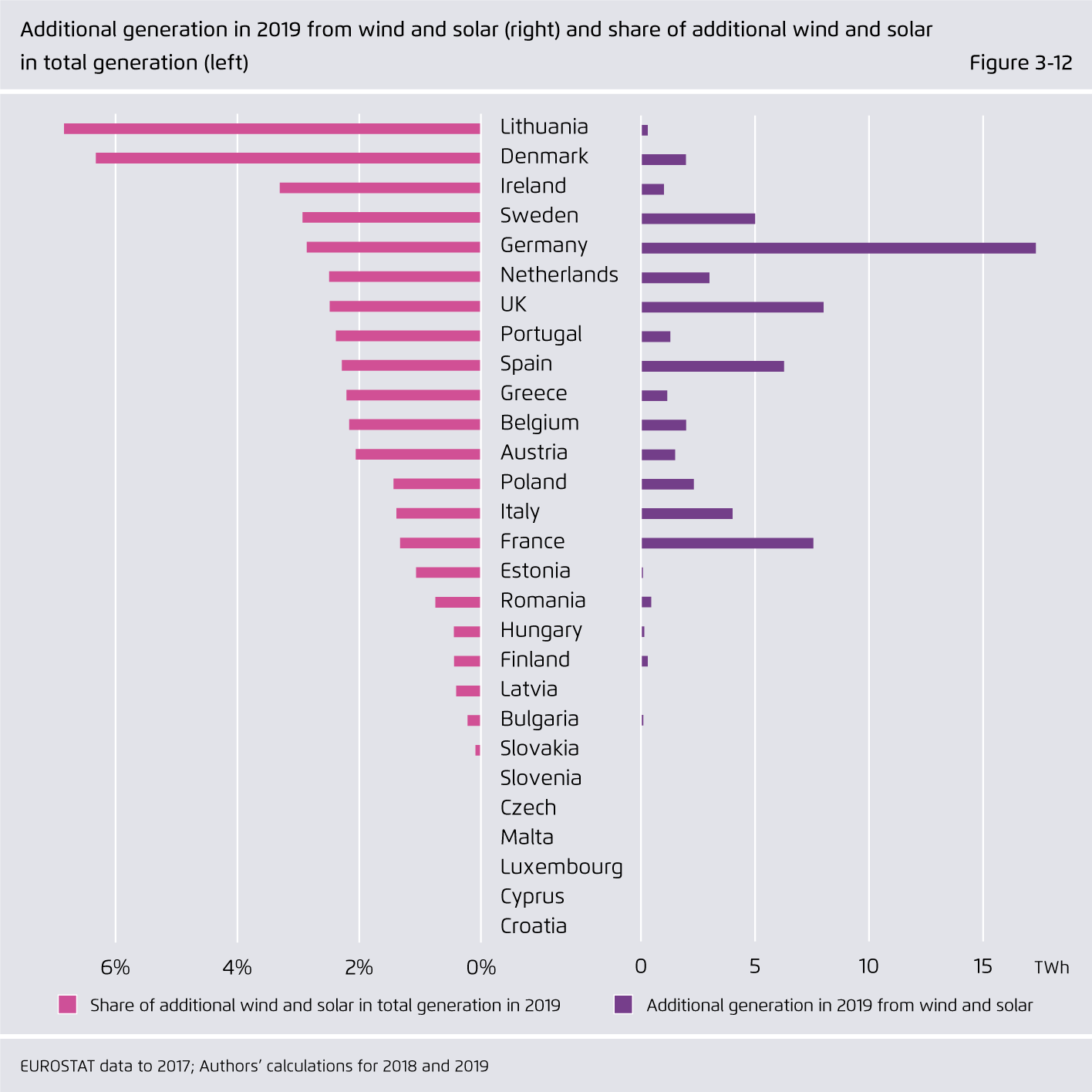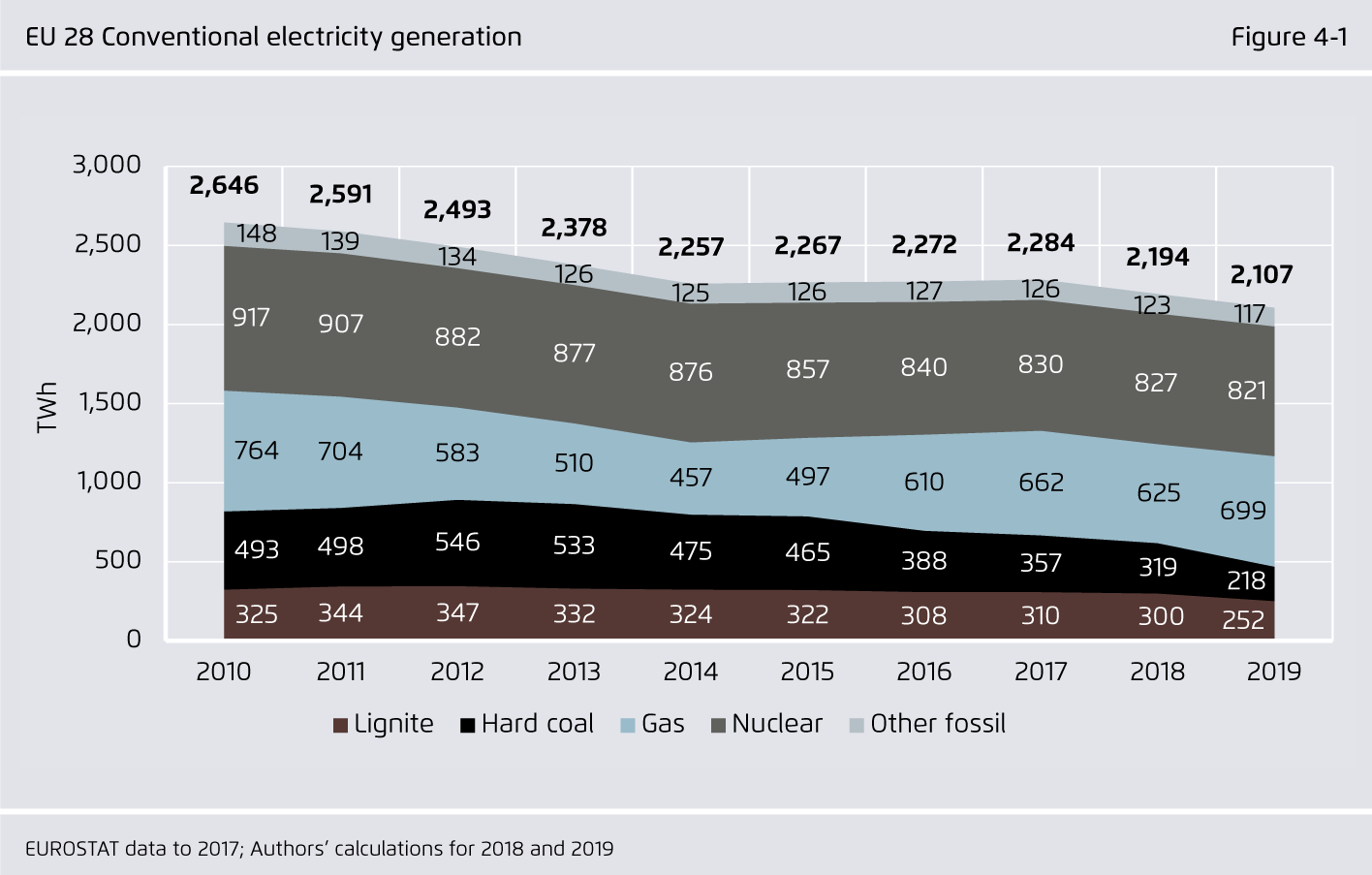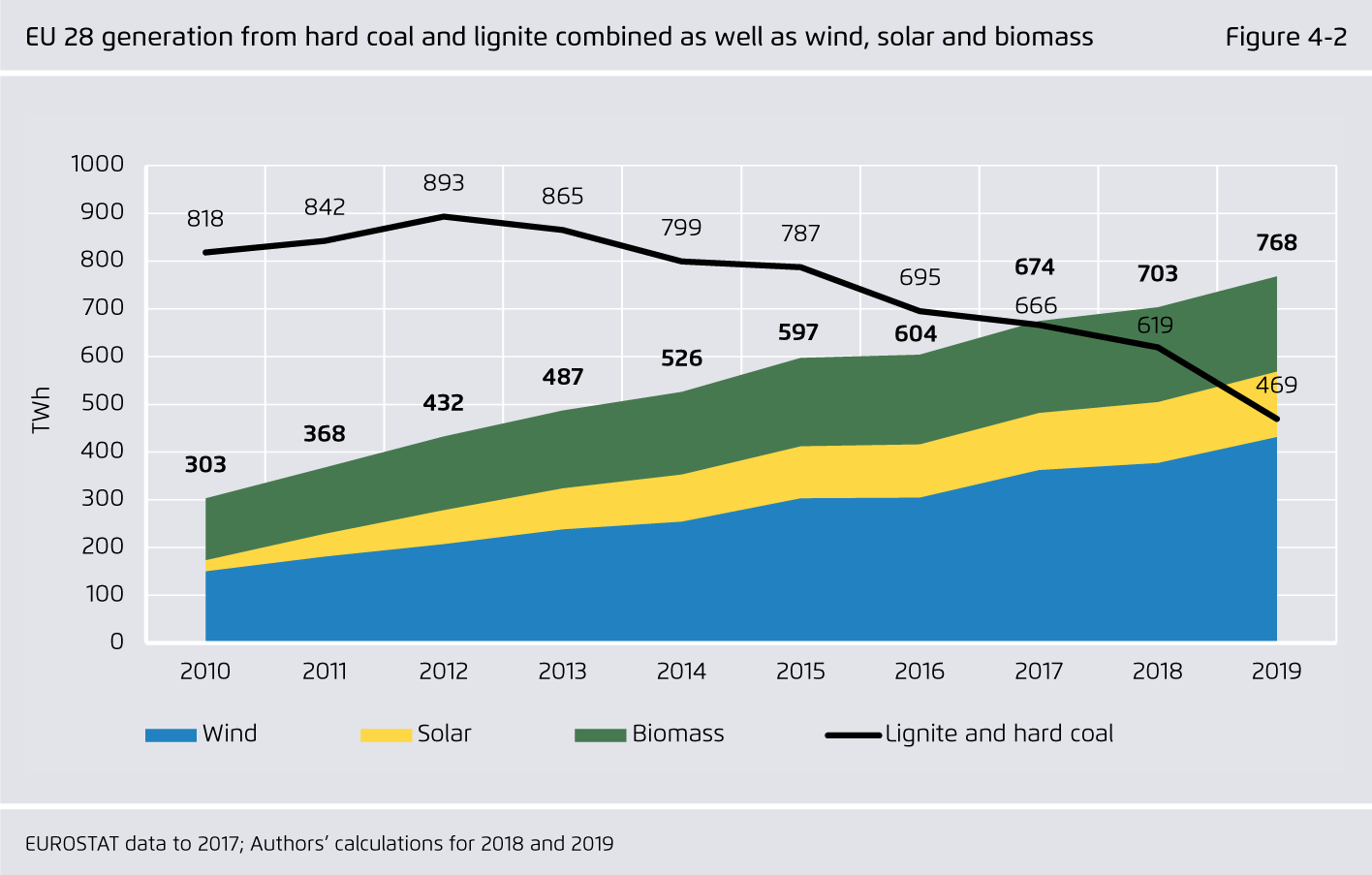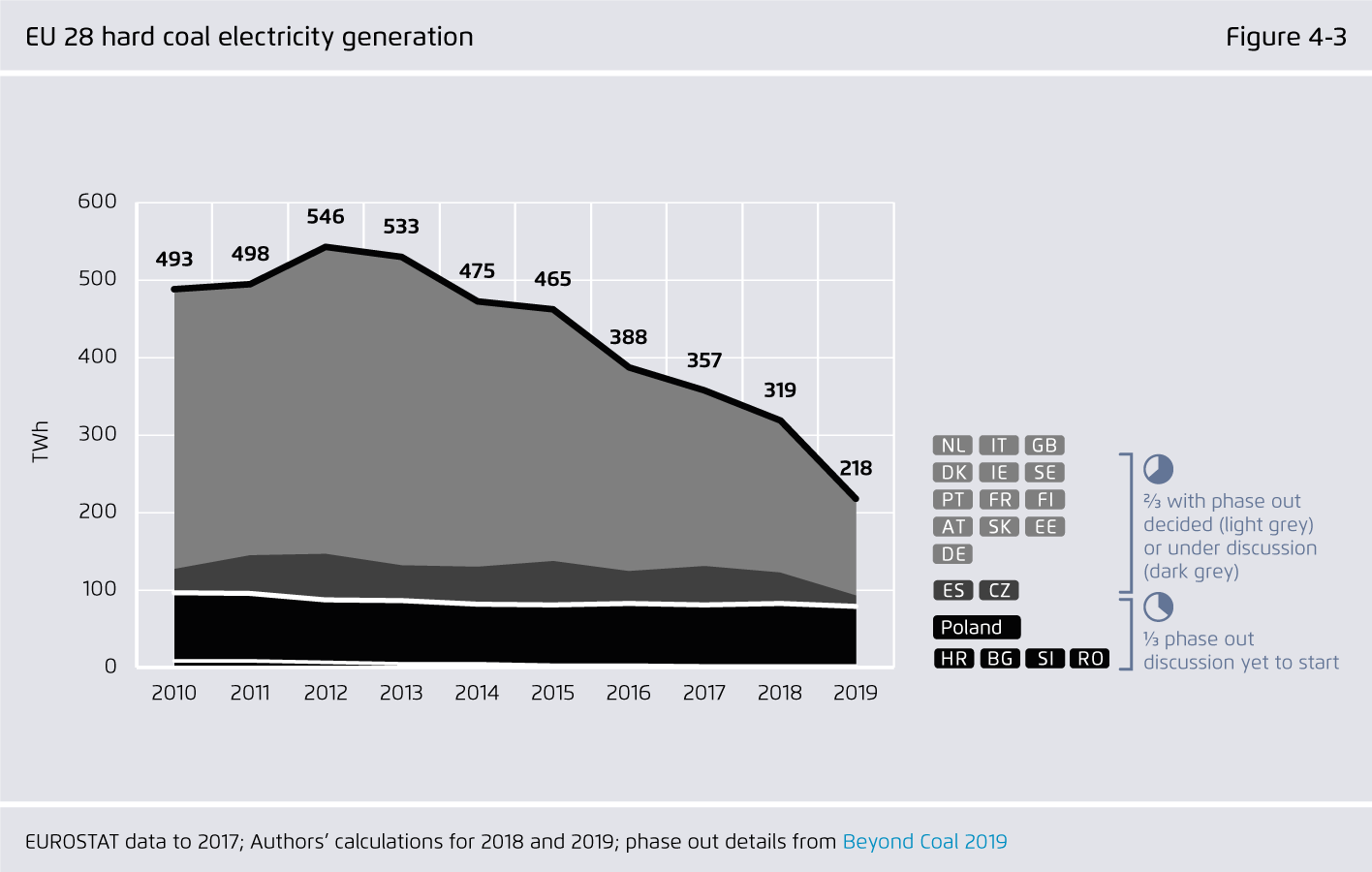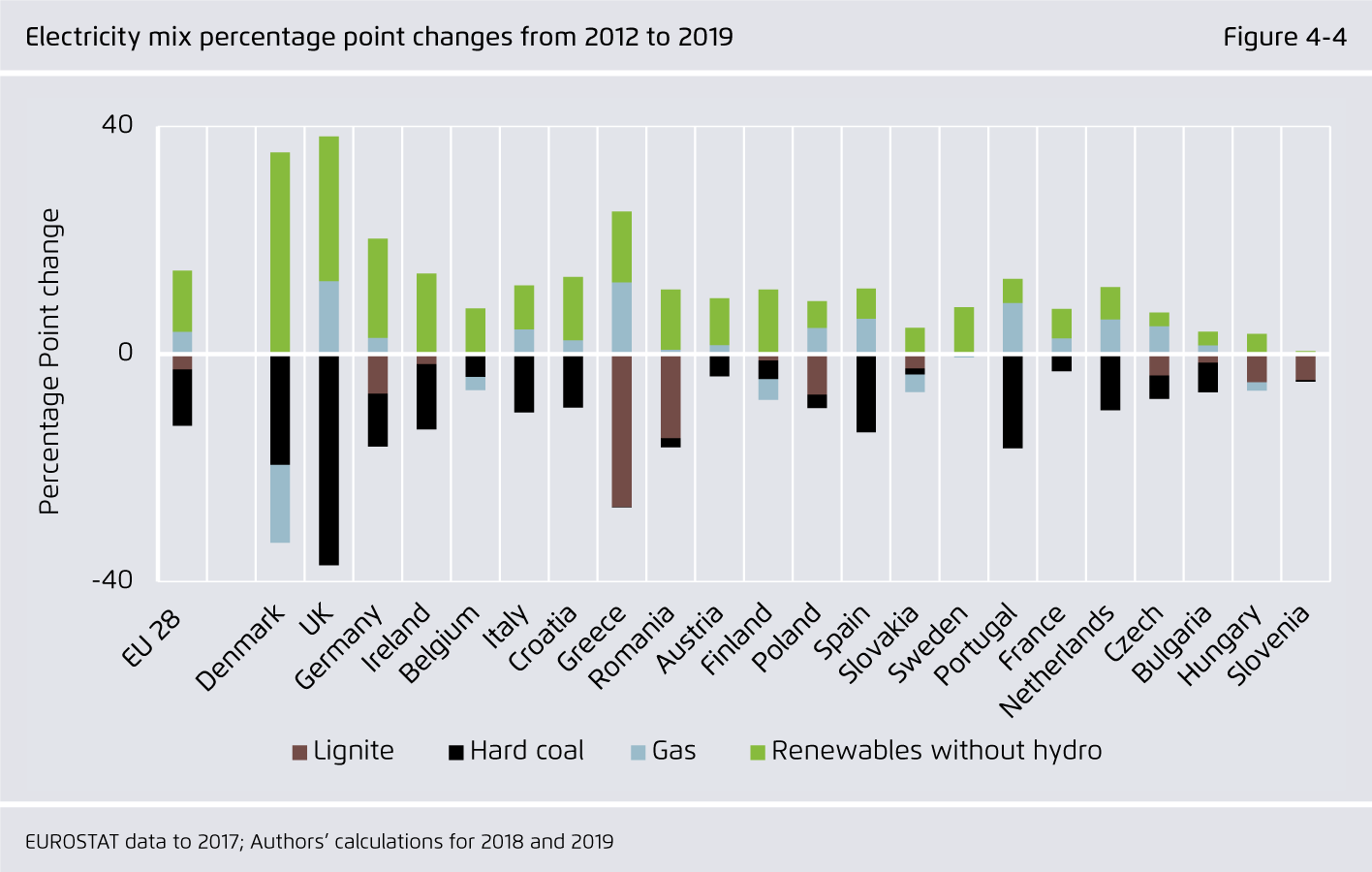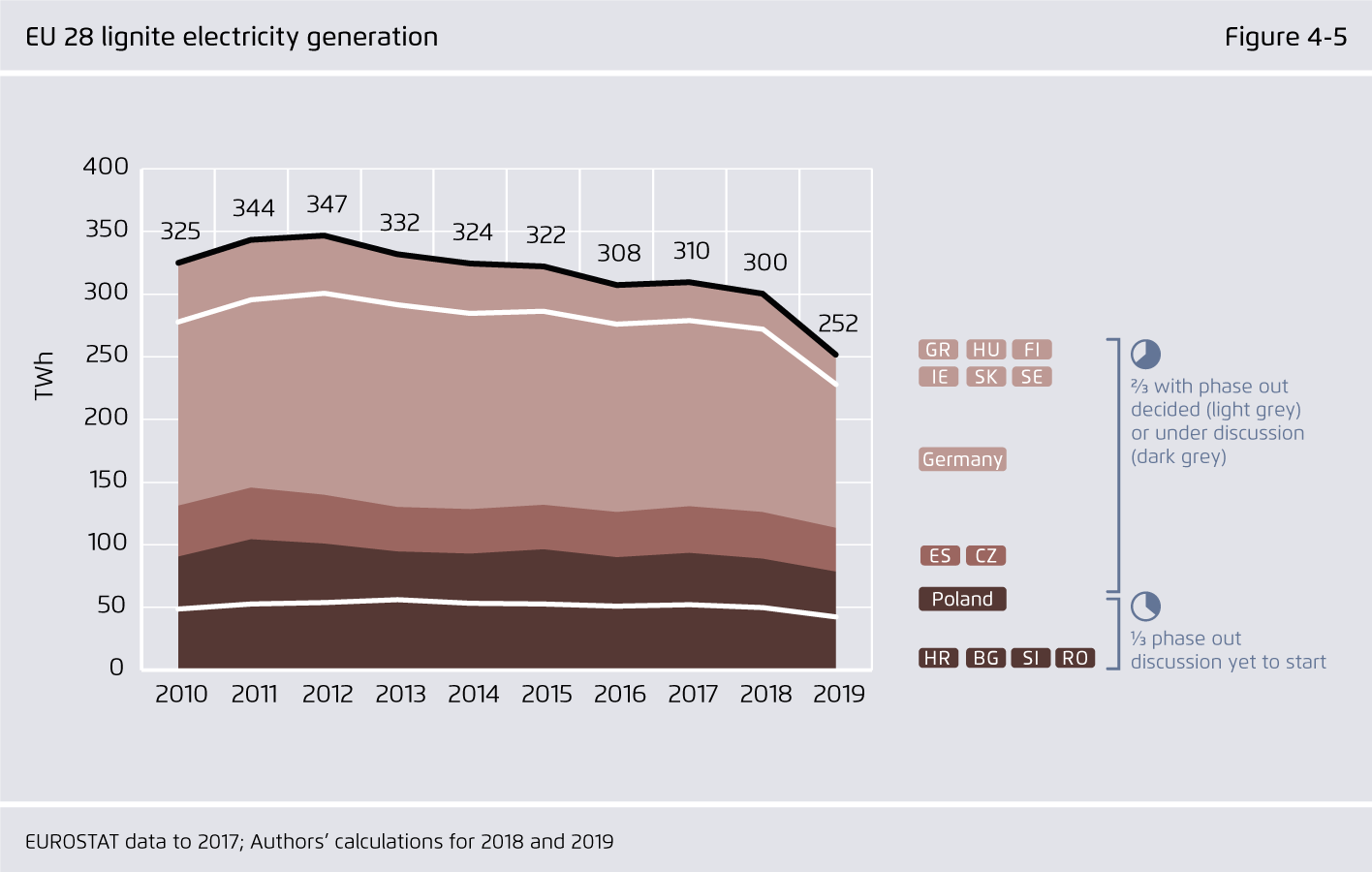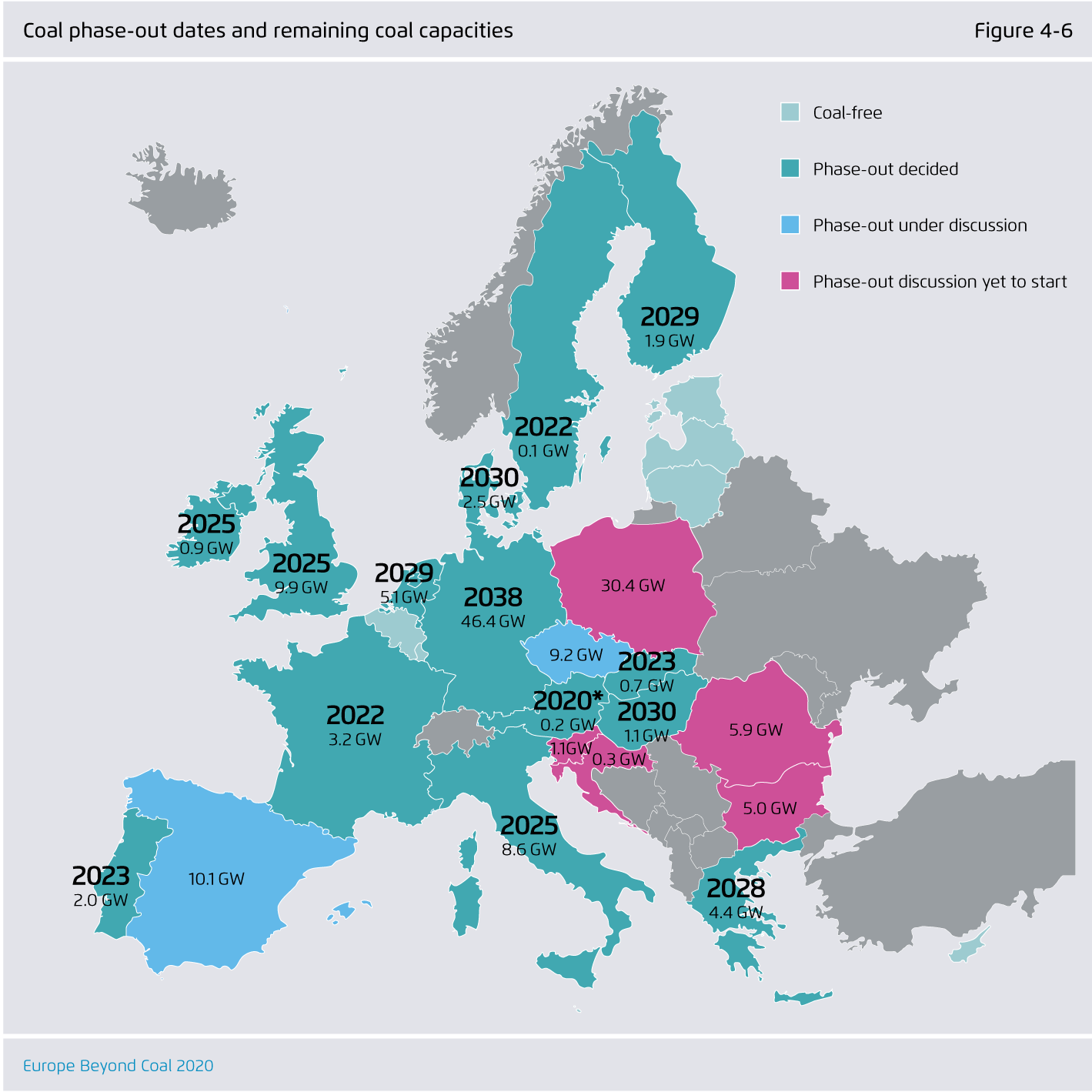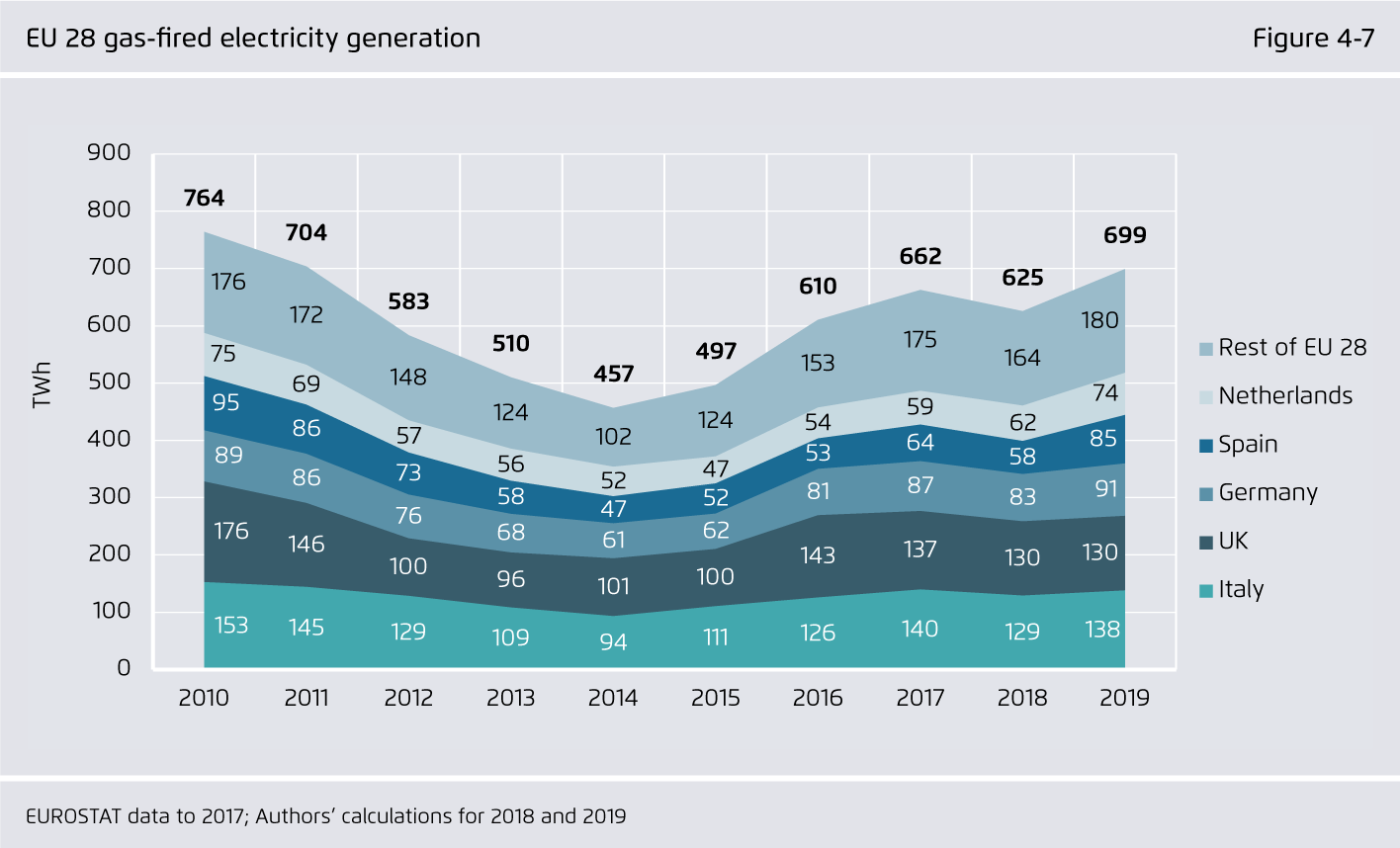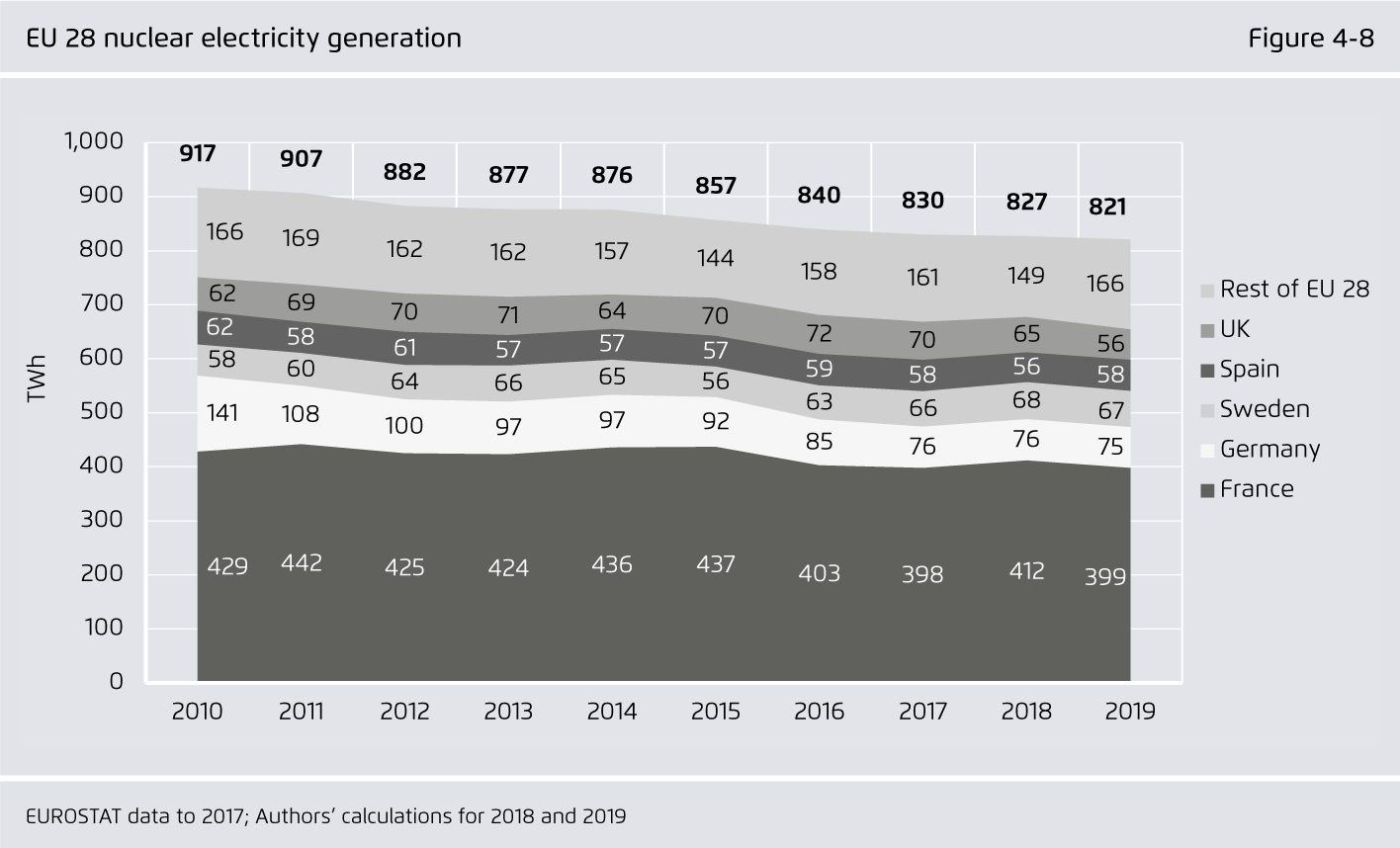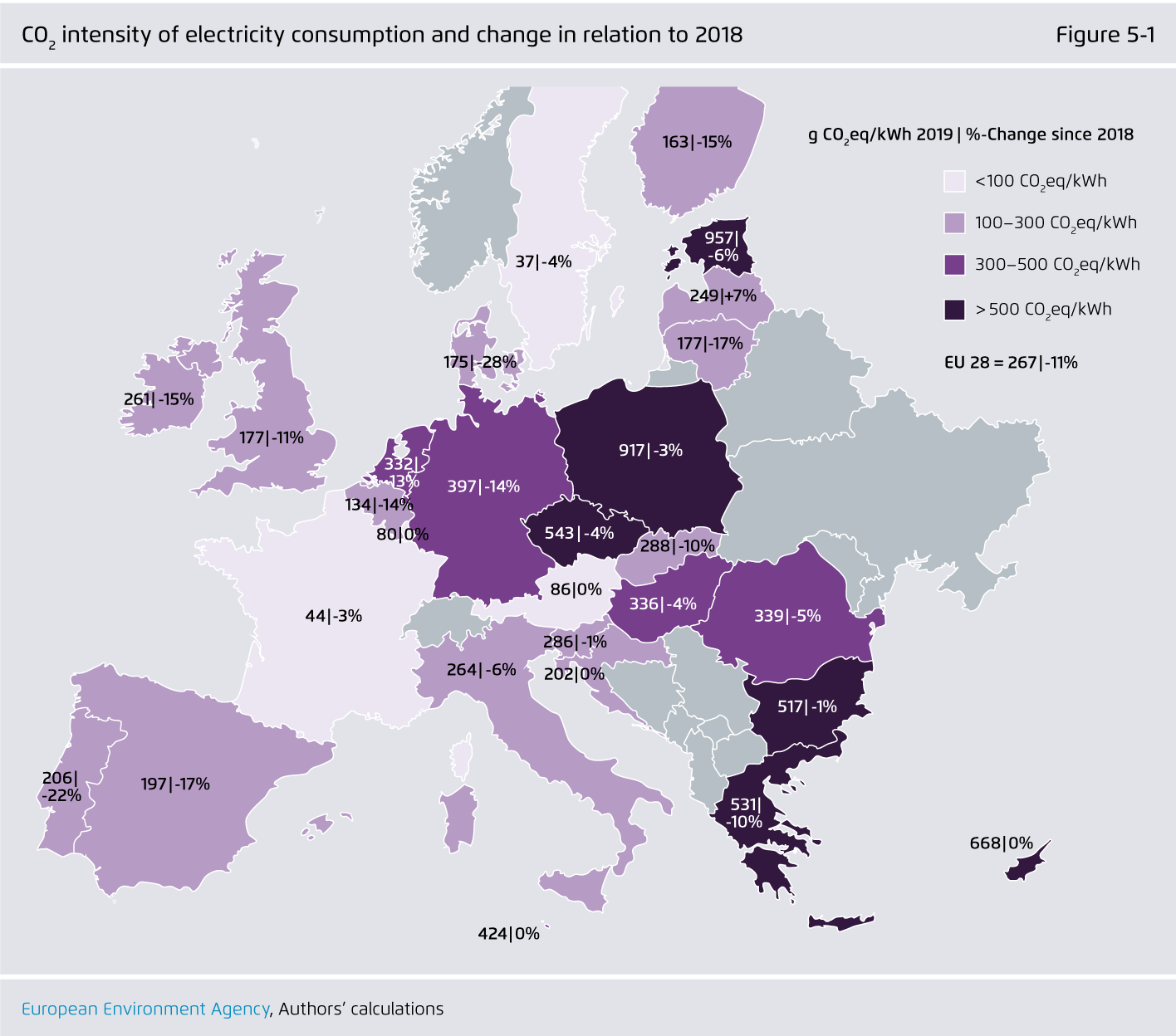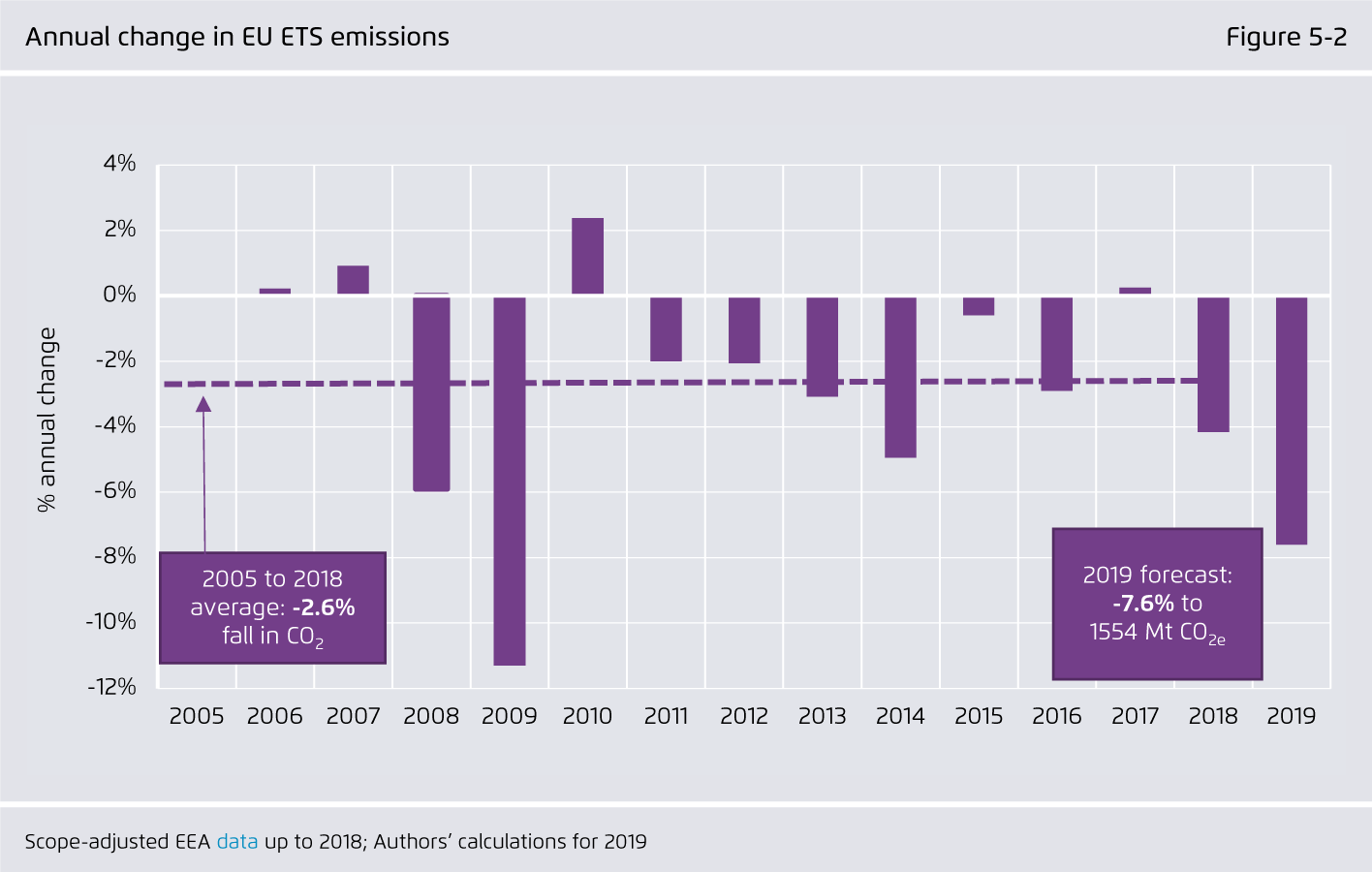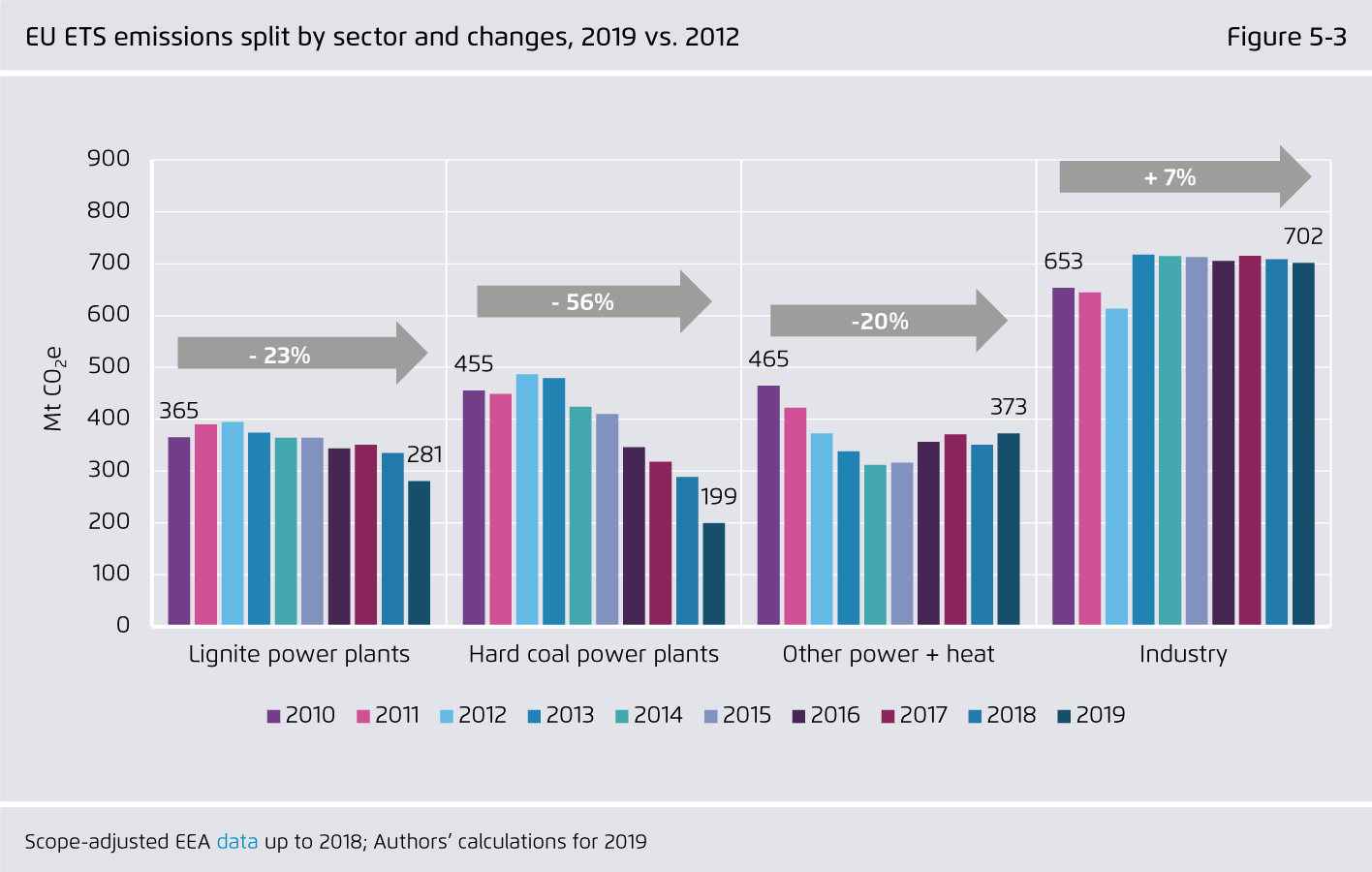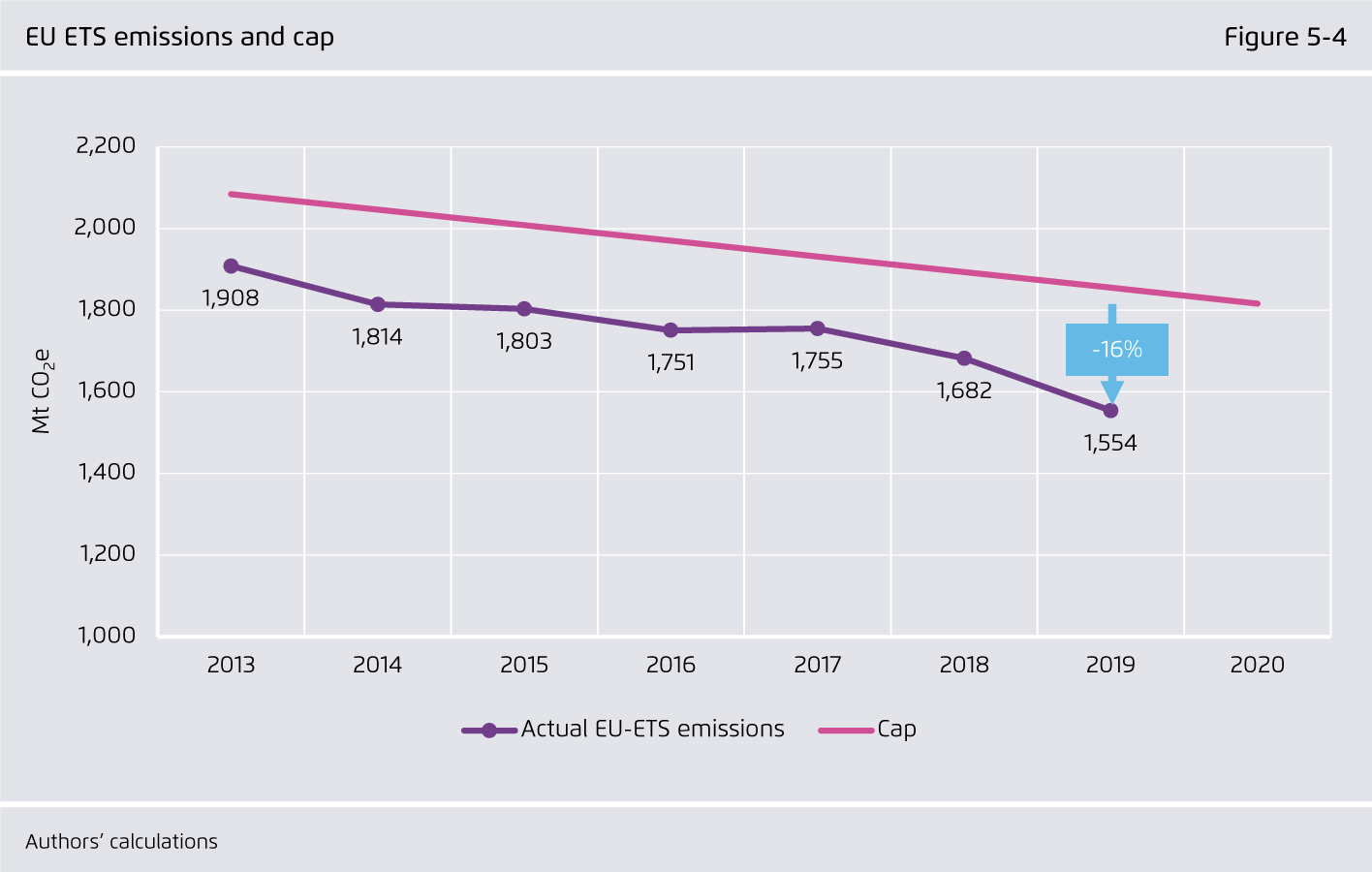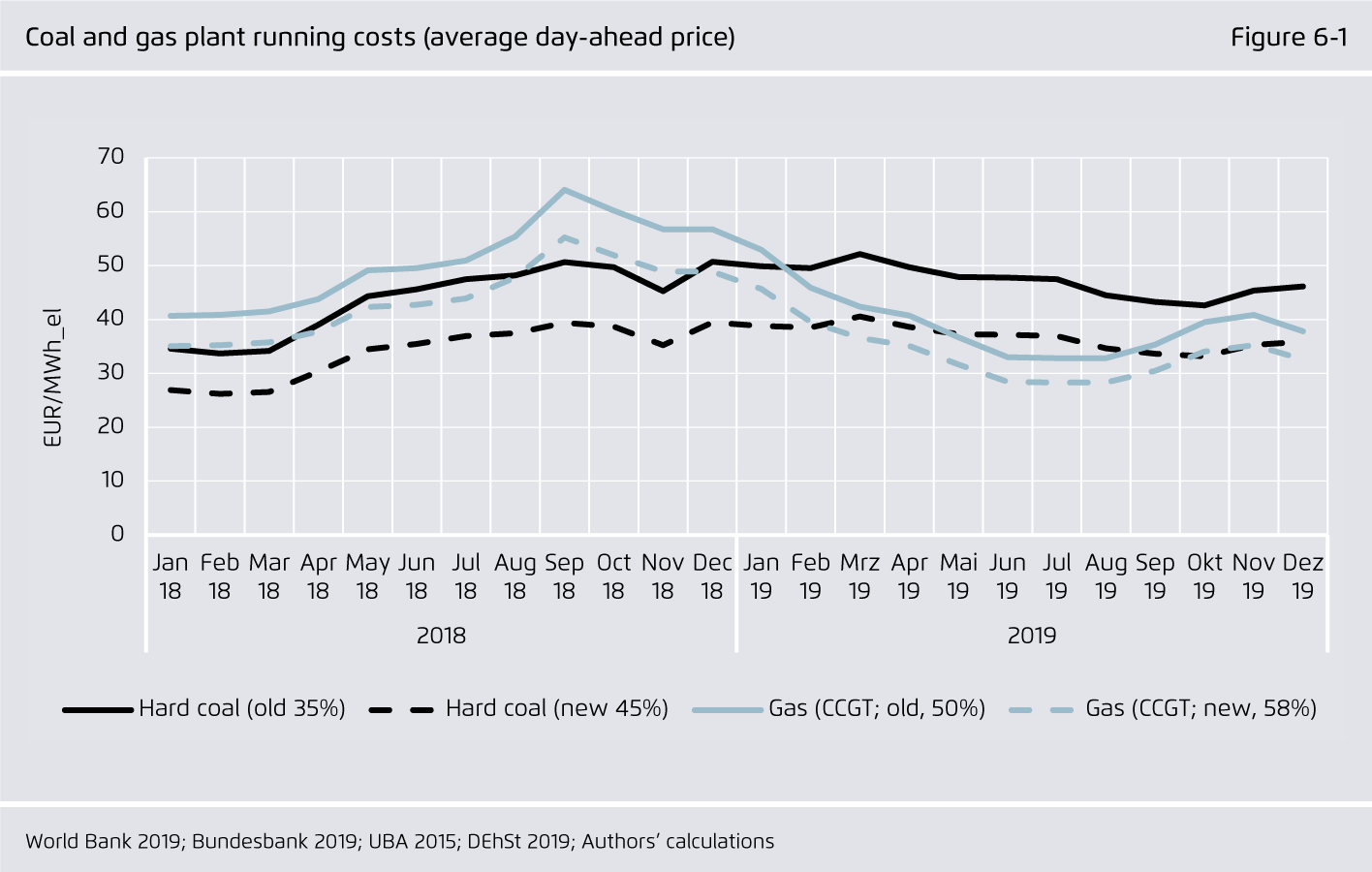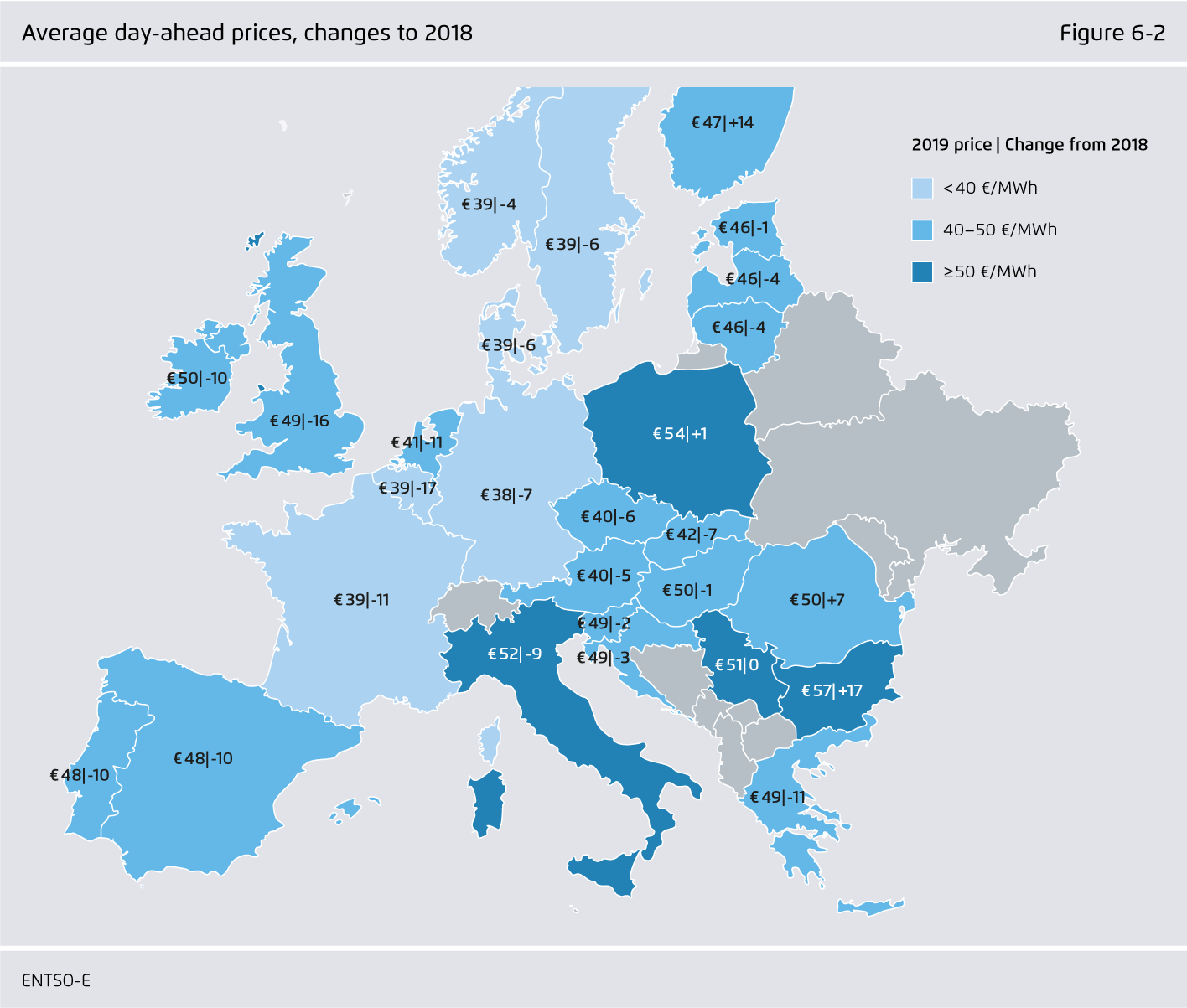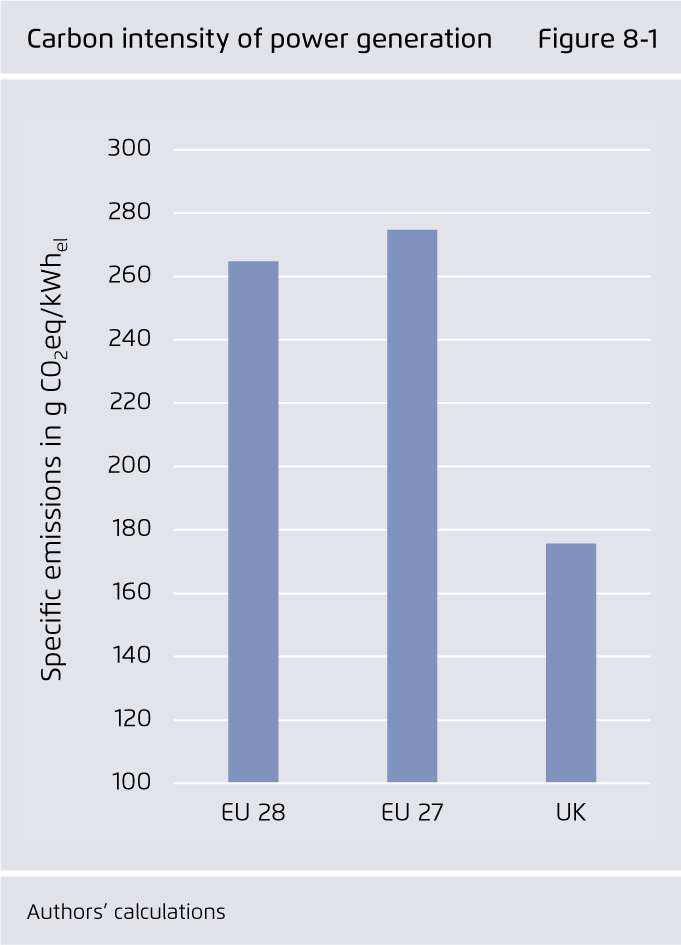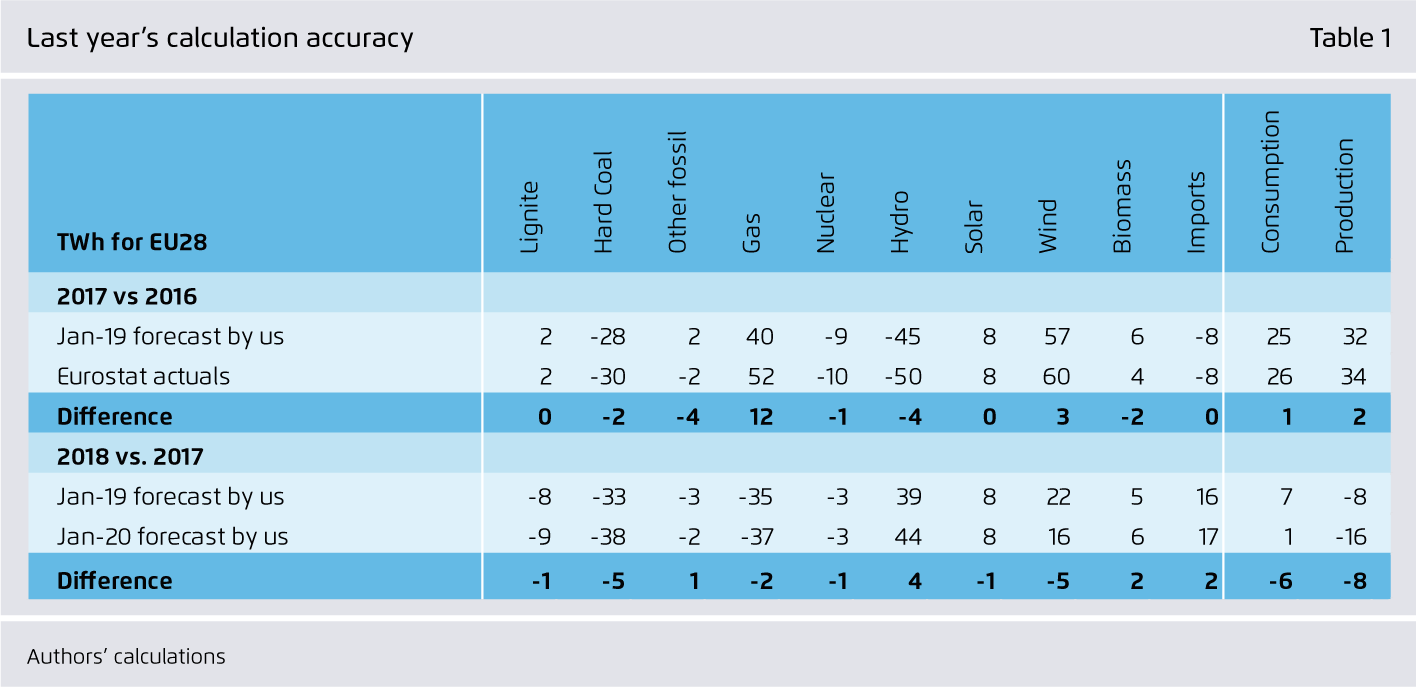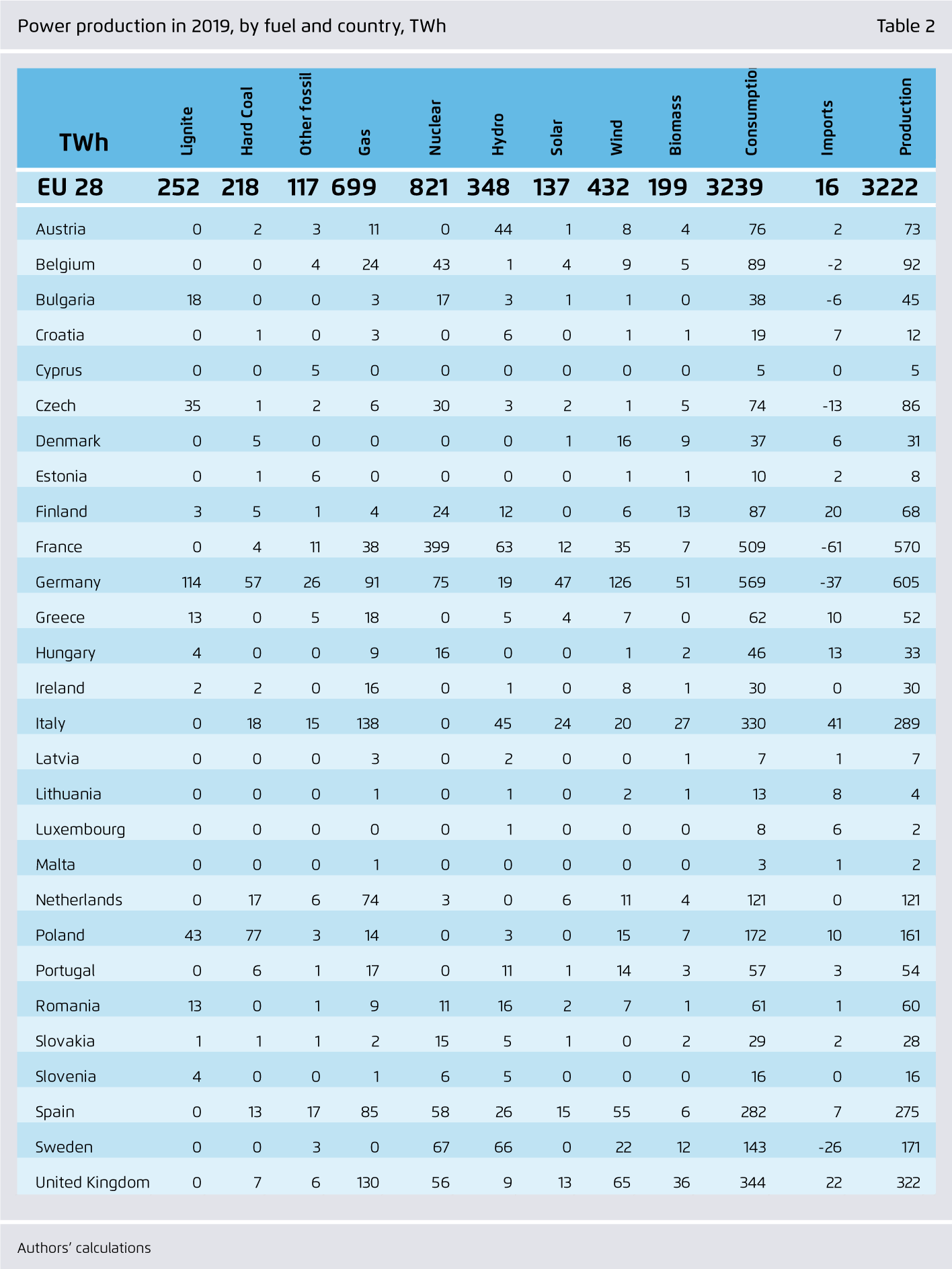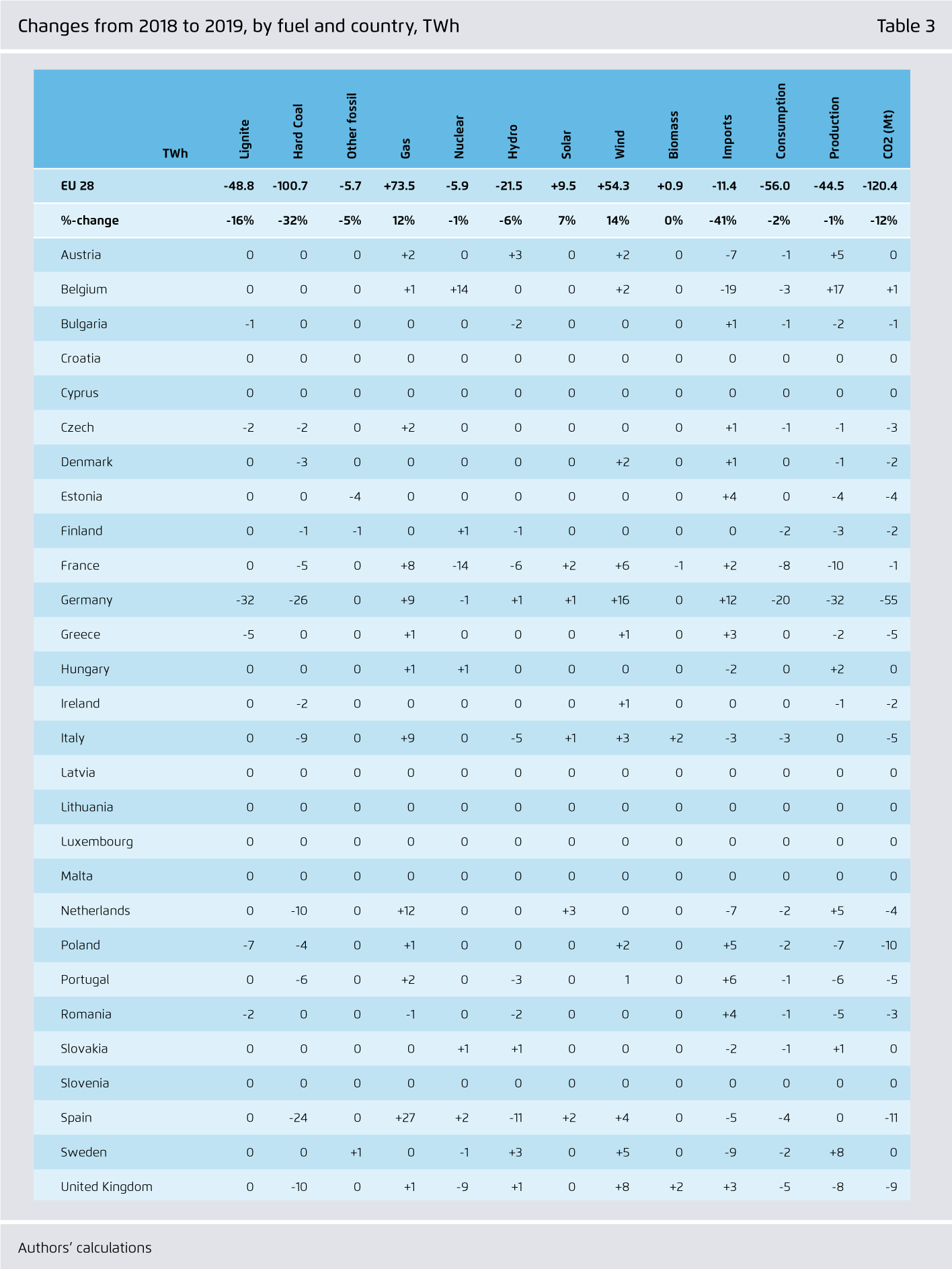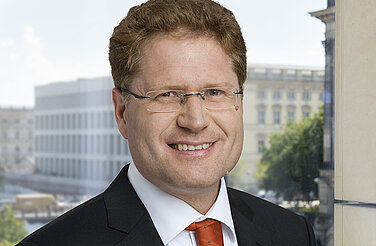-
Coal generation collapsed by 24% in the EU in 2019.
Hard coal generation dropped by 32%, while lignite decreased by 16%. This development is driven by CO₂ price increases and deployment of renewables. Gas replaced around half of the coal, solar and wind the other half. The decline of coal will continue: Greece and Hungary both made commitments in 2019 to phase out coal, bringing the total of member states phasing out coal to 15. Only Poland, Romania, Bulgaria and Slovenia are yet to start.
-
The fall in coal means CO₂ emissions in Europe’s power sector fell by a record 120 Mt, or 12% in 2019.
This is likely to be the largest ever fall. EU Emissions Trading Scheme (EU ETS) stationary emissions, including heavy industry, fell by 7.6% in 2019, implying that industrial emissions are likely to have decreased by only 1%. Nevertheless, overall emissions covered by the EU ETS are falling much faster than the cap; showing the central role of a further strengthening of the EU ETS to accelerate climate action in Europe.
-
Renewables rose to a new record supplying 35% of EU electricity.
For the first time, wind and solar combined provided more electricity than coal, contributing 18% of EU electricity in 2019. This is more than a doubling of market share since 2013. The increase in wind and solar generation was strongest in western Europe, while Poland and Greece have started to engage. The rest of eastern Europe is significantly lagging behind. The economic opportunities of low-cost renewables became increasingly visible. 2019 saw record low auction prices for offshore wind (UK) and solar (Portugal) - below wholesale prices – and the largest wholesale price decreases in countries where wind and solar expanded most.
-
Europe’s energy transition is taking off.
The European Green Deal has put the fight against the climate crisis at the very core of all EU policy work over the next five years: EU heads of state have endorsed Europe to become the first greenhouse gas neutral continent by 2050, and the EU commission is putting forward proposals to raise Europe’s 2030 greenhouse gas reduction target to -50% or -55% below 1990 levels. This implies power sector emissions will keep falling, even if electricity demand increases as transport, heating industry continue to electrify.
The European power sector in 2019
Up-to-date analysis on the electricity transition
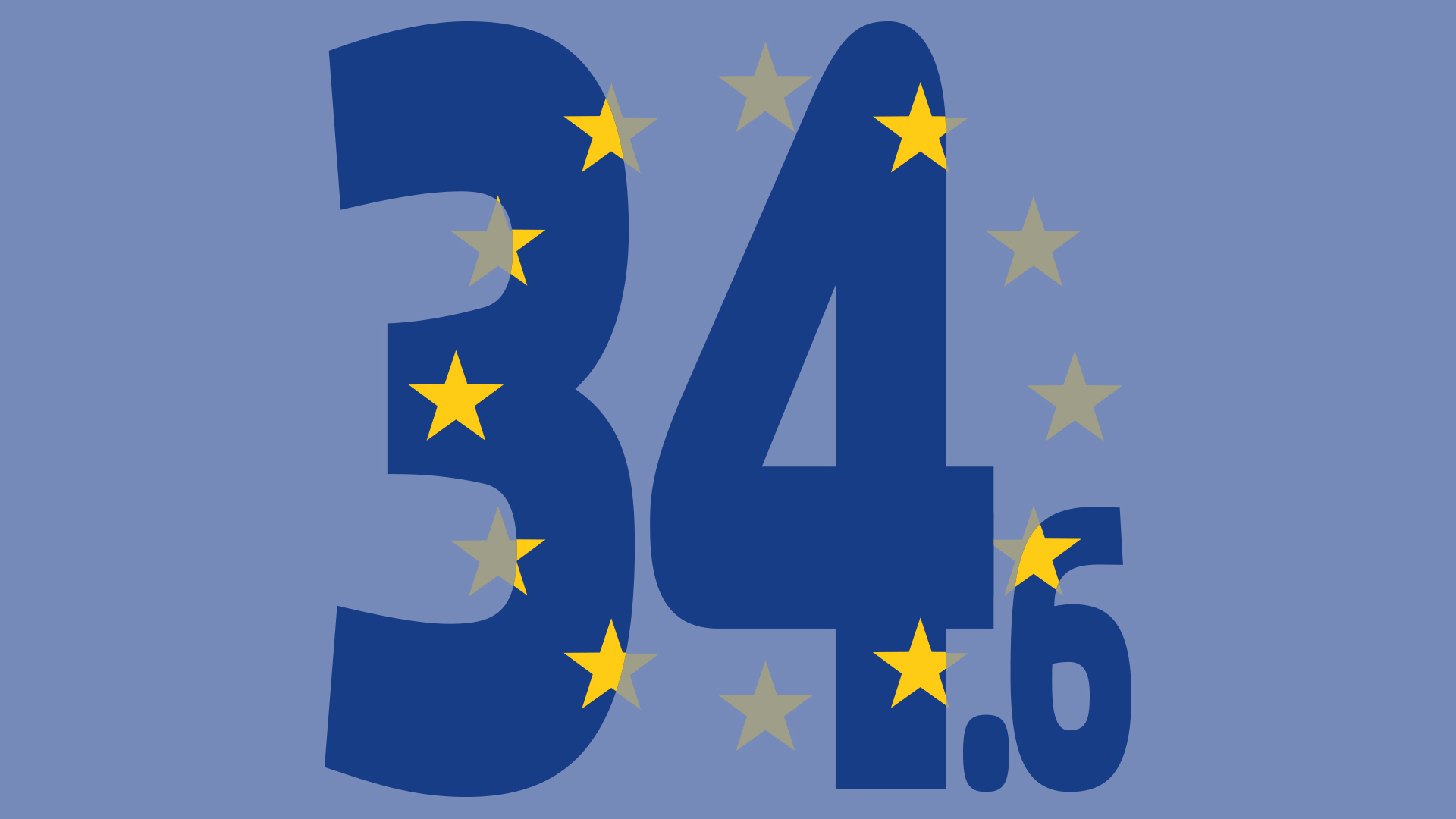
Preface
The power sector is playing a leading role in the decarbonisation of Europe, so it is critical to track the progress of the electricity transition as accurately and timely as possible.
For the third year in a row, Sandbag and Agora Energiewende have joined forces to update on the European electricity sector transition. Key topics include renewables growth, conventional power generation, electricity consumption, and CO₂ emissions.
We provide our best-view of 2019 electricity consumption, generation and emissions by country. This data is available to download in order to enable others to also perform up-to-date analysis.
Key findings
Bibliographical data
Downloads
-
Main Report
pdf 2 MB
The European power sector in 2019
Up-to-date analysis on the electricity transition
-
Slide Deck
pdf 2 MB
The European power sector in 2019
This slide deck contains all graphics from our annual review 2019
-
Data Attachment
xlsx 645 KB
The European power sector in 2019
Excel file that lists the generation, production and emissions data that were used for the development of this study
All figures in this publication
Changes in EU 28 electricity generation from 2018 to 2019
Figure Fig 1-1 from The European power sector in 2019 on page 9
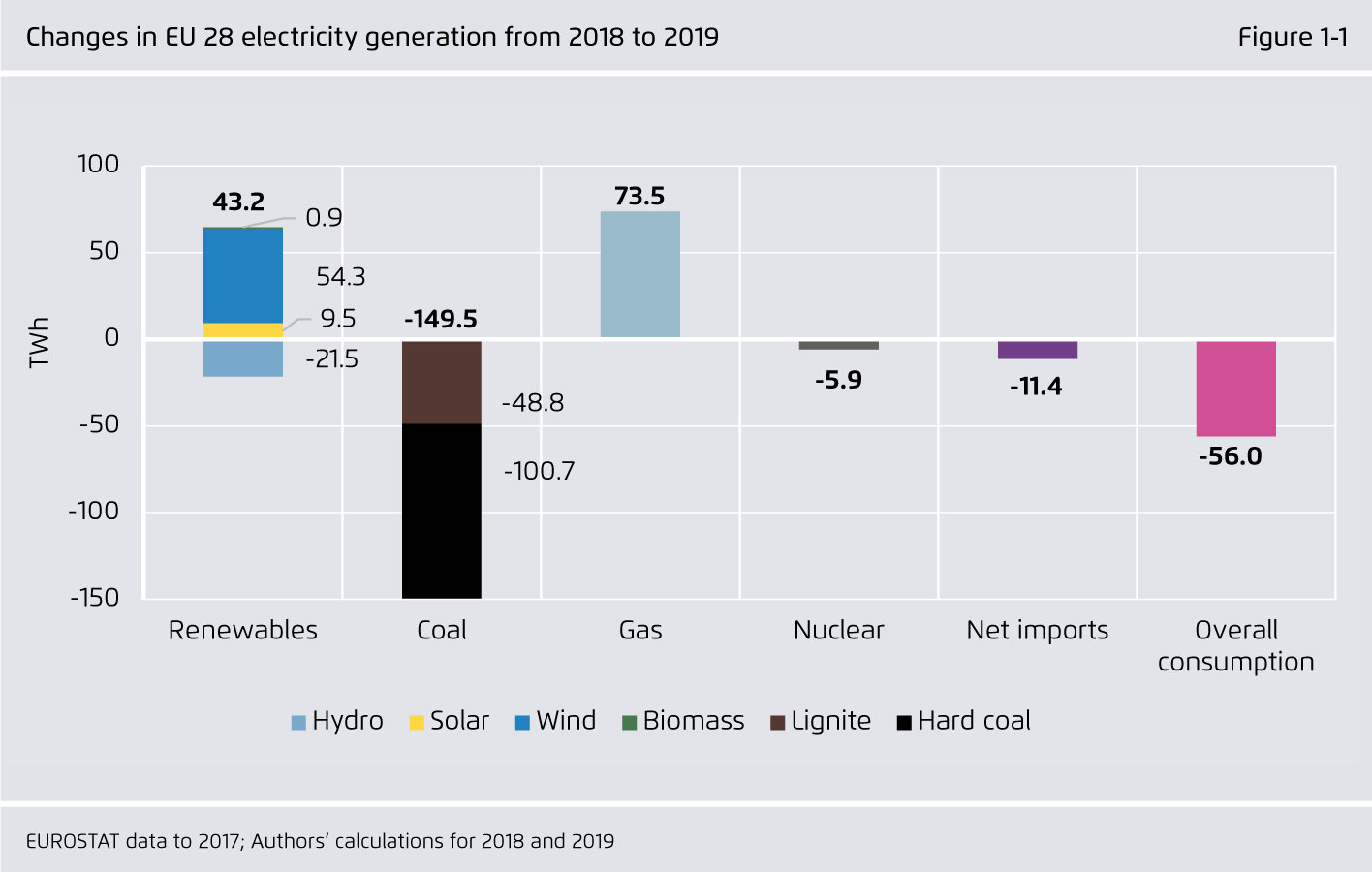
EU 28 electricity generation
Figure Fig 1-2 from The European power sector in 2019 on page 9
